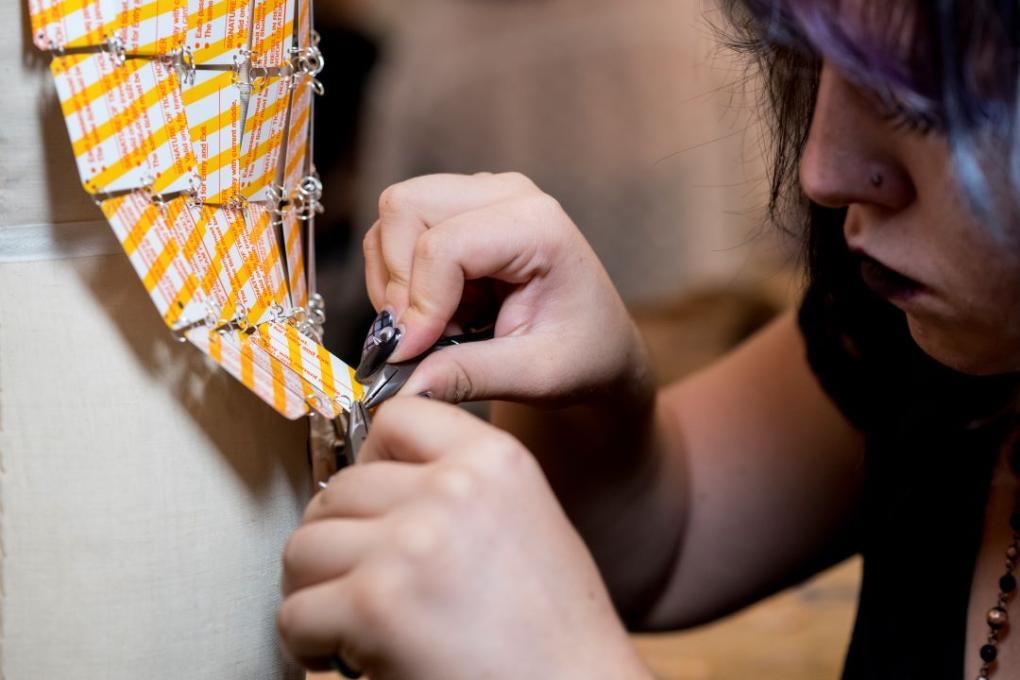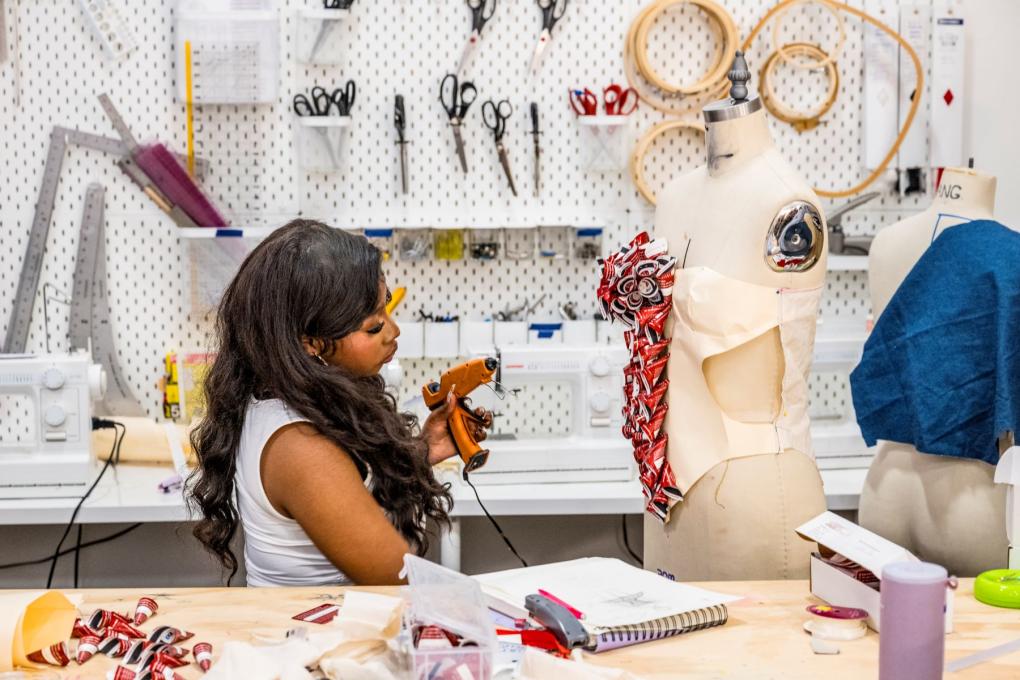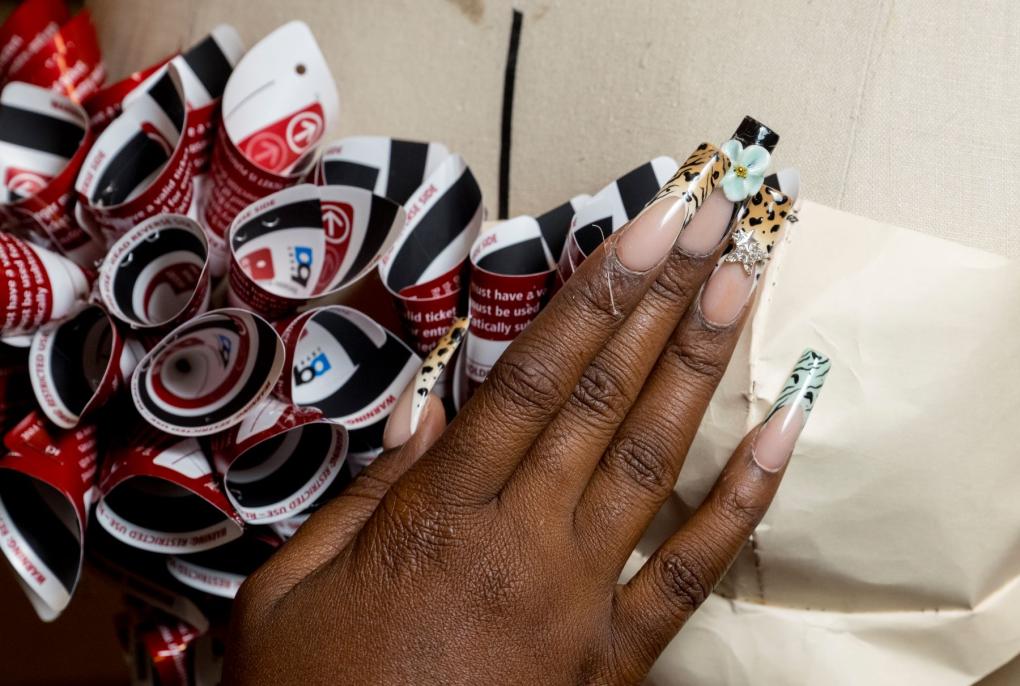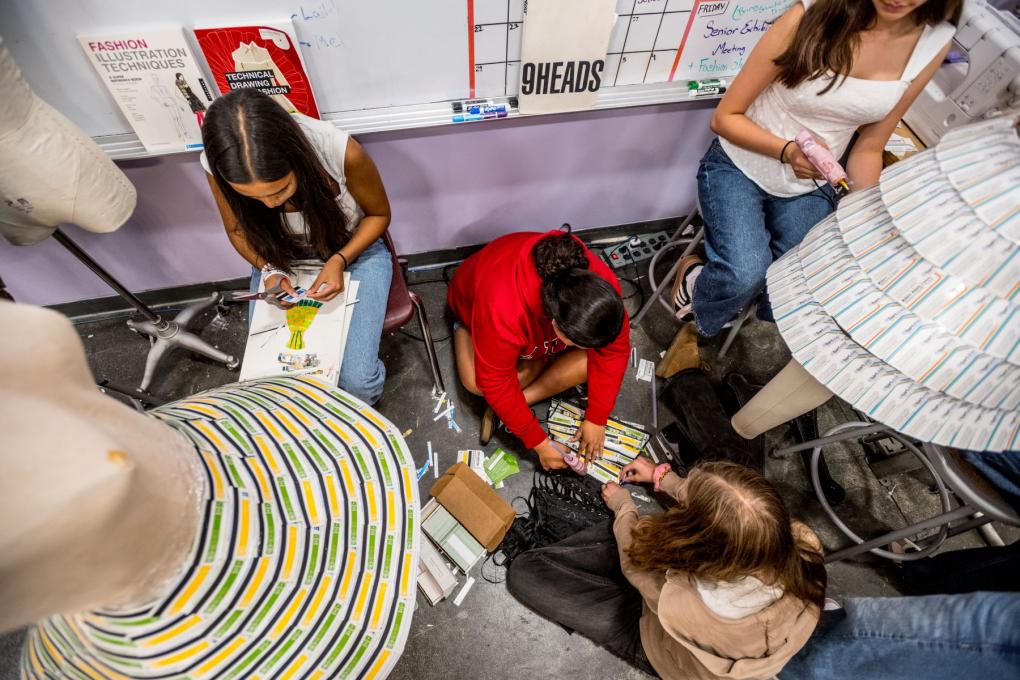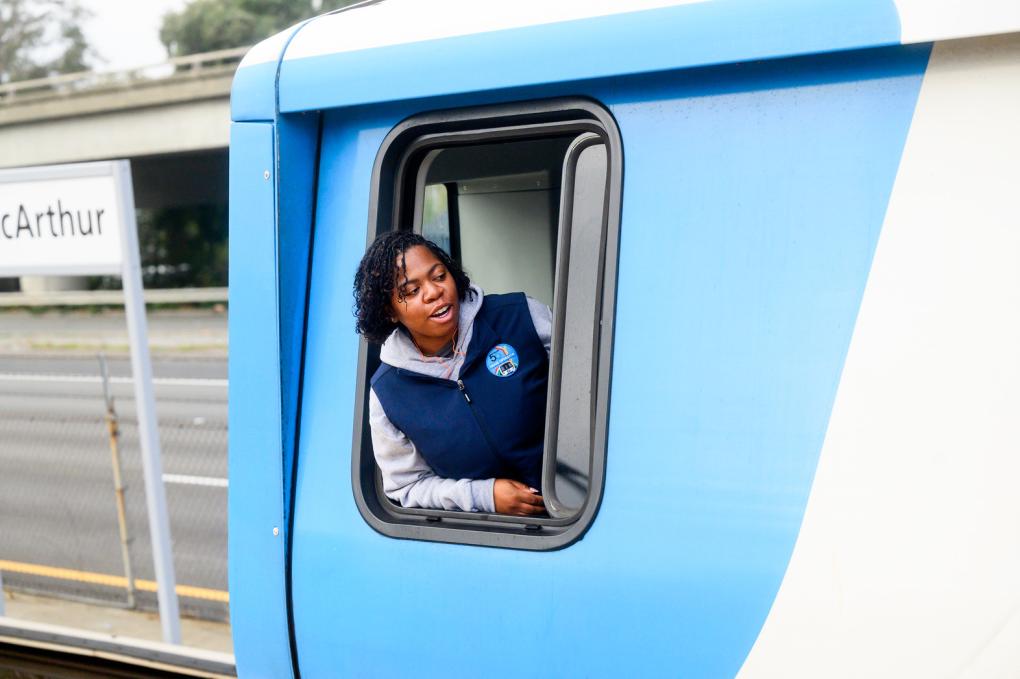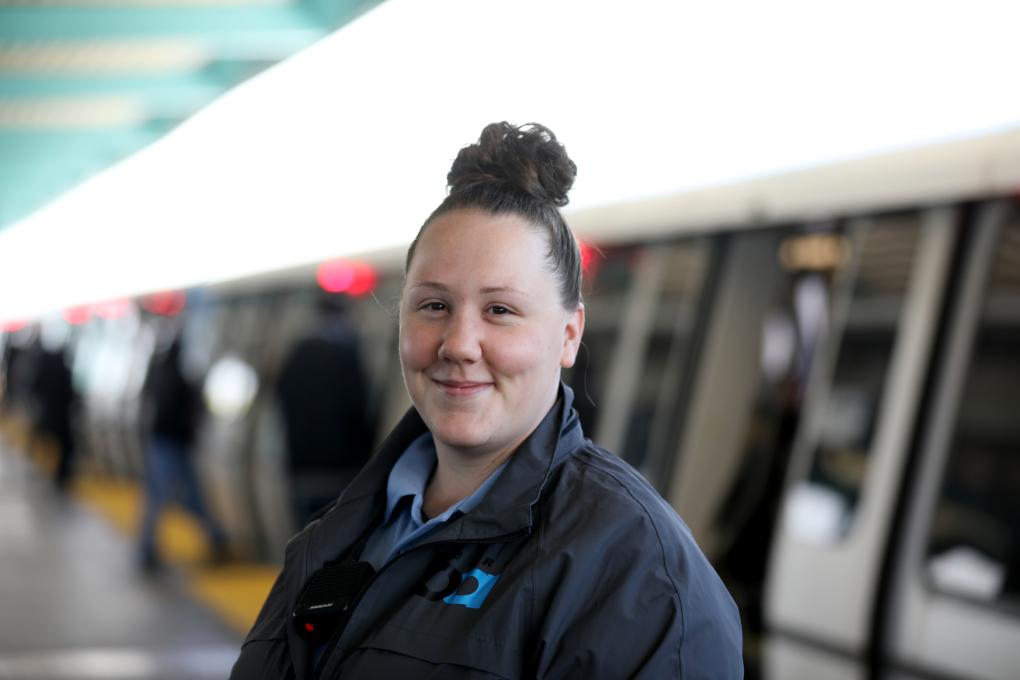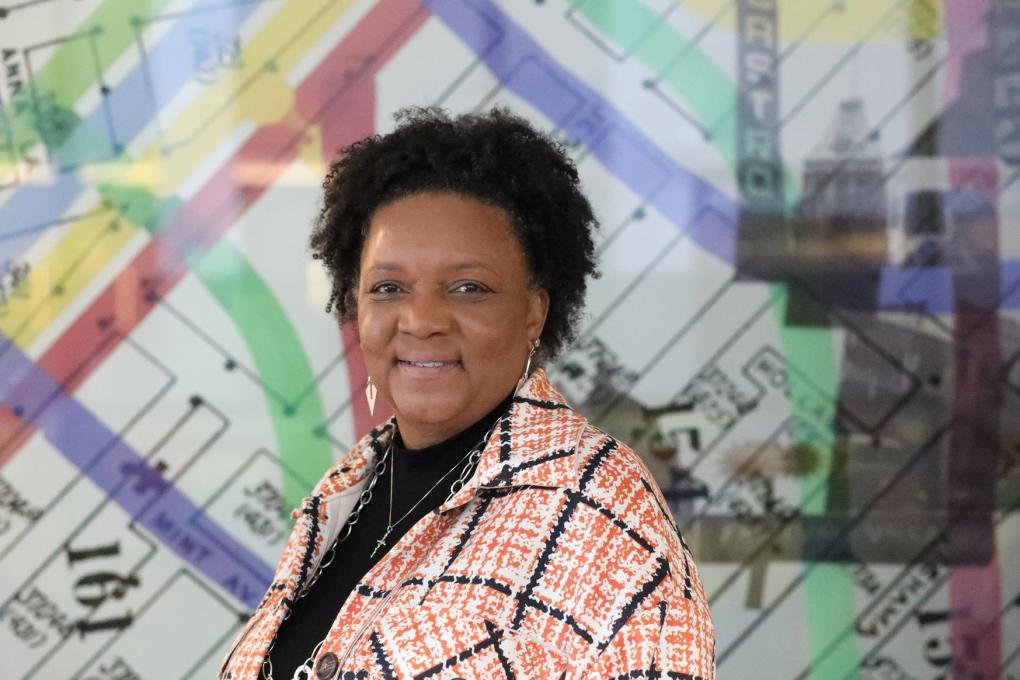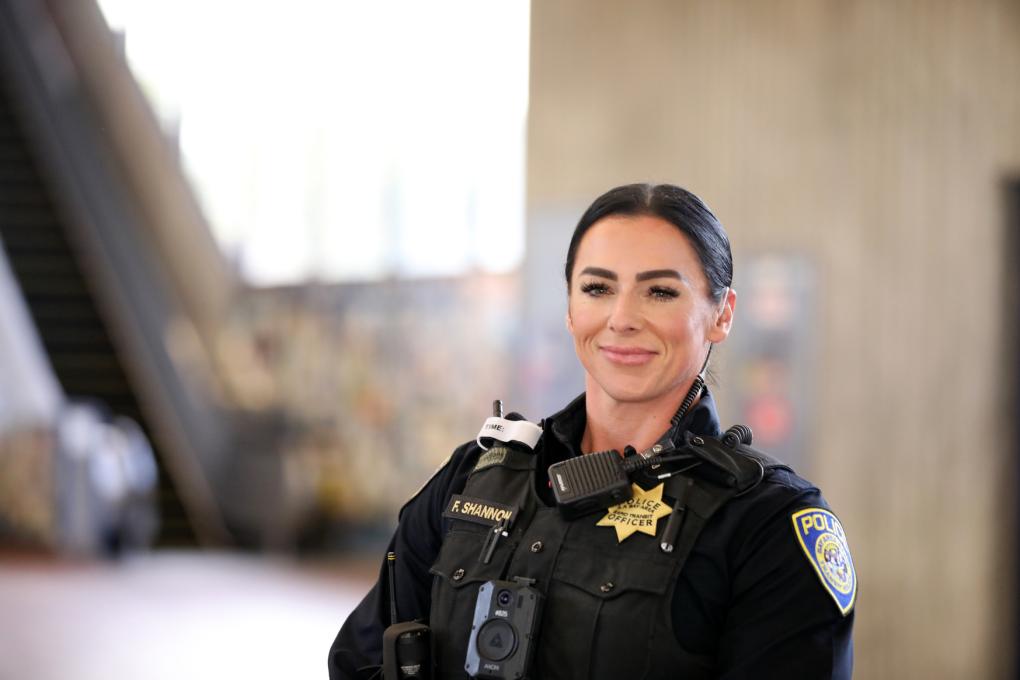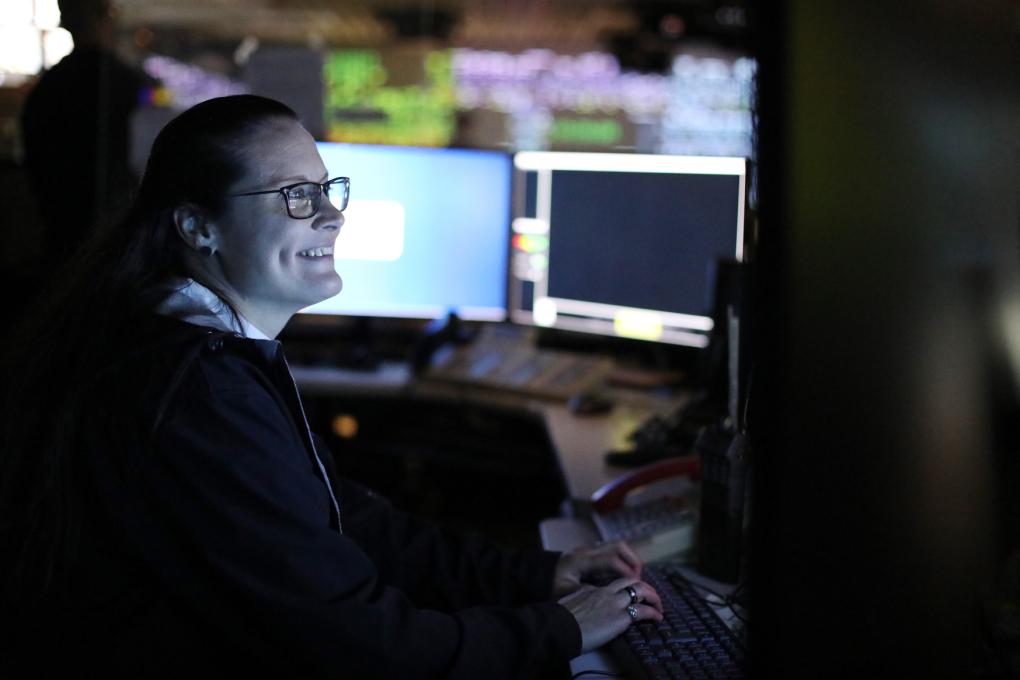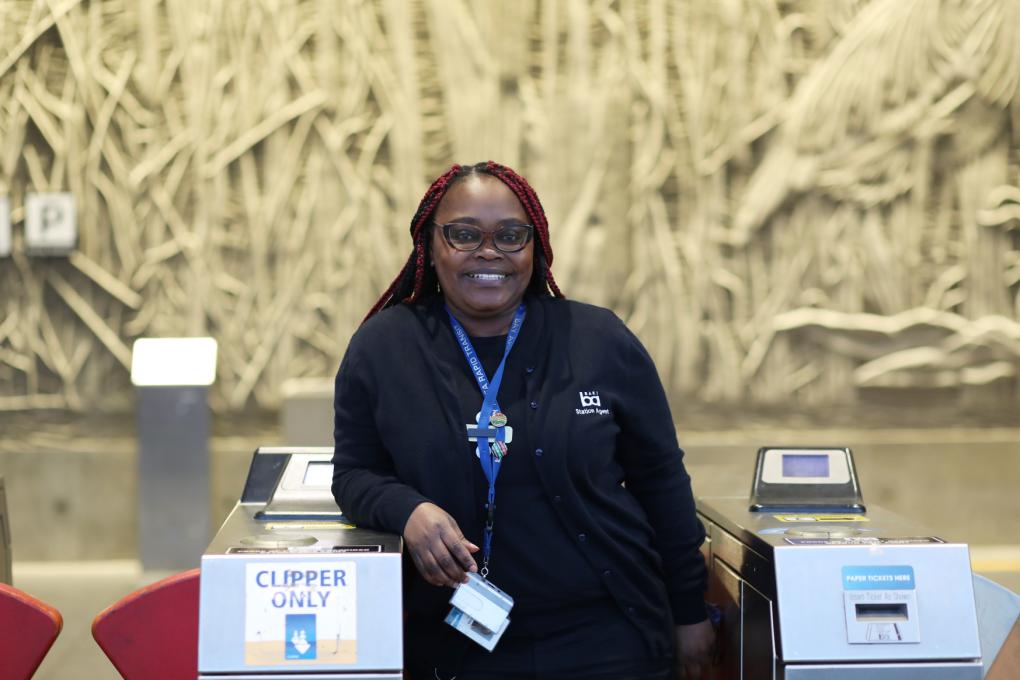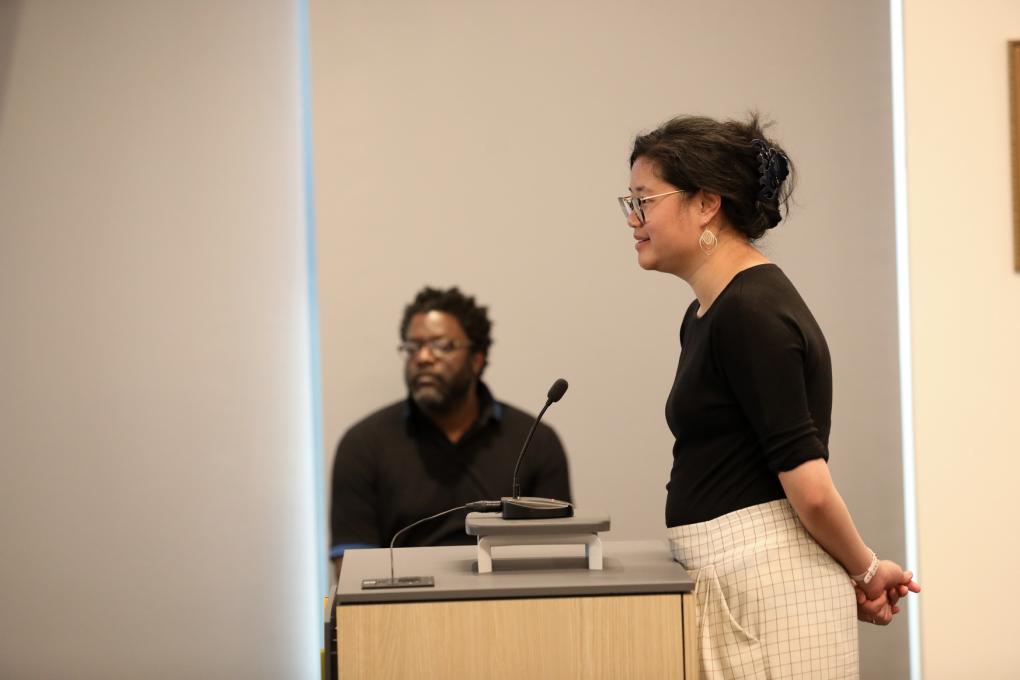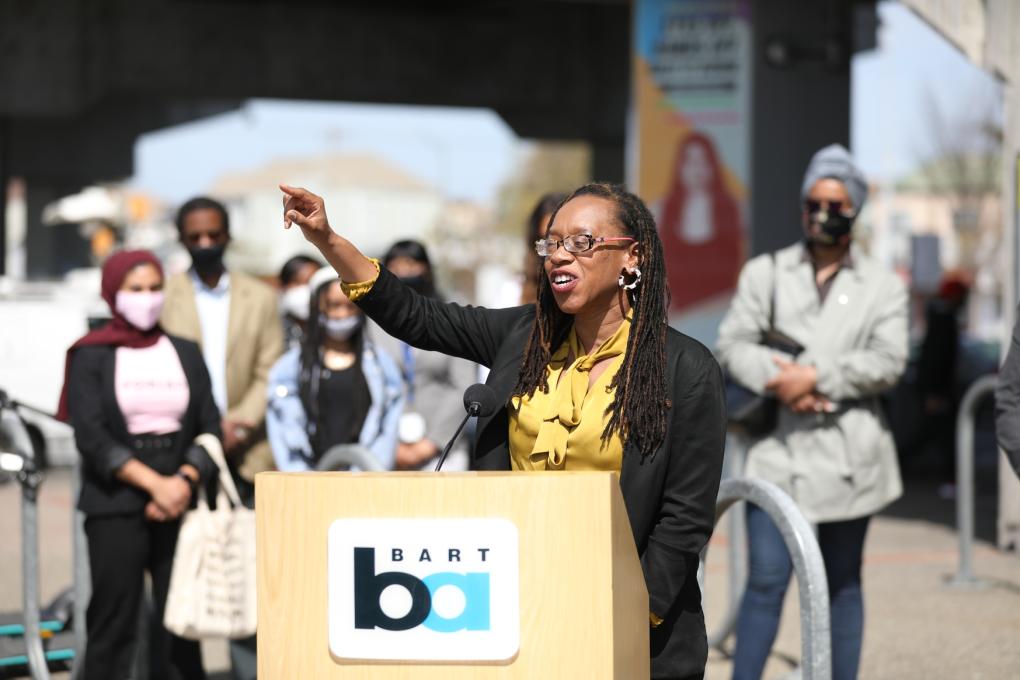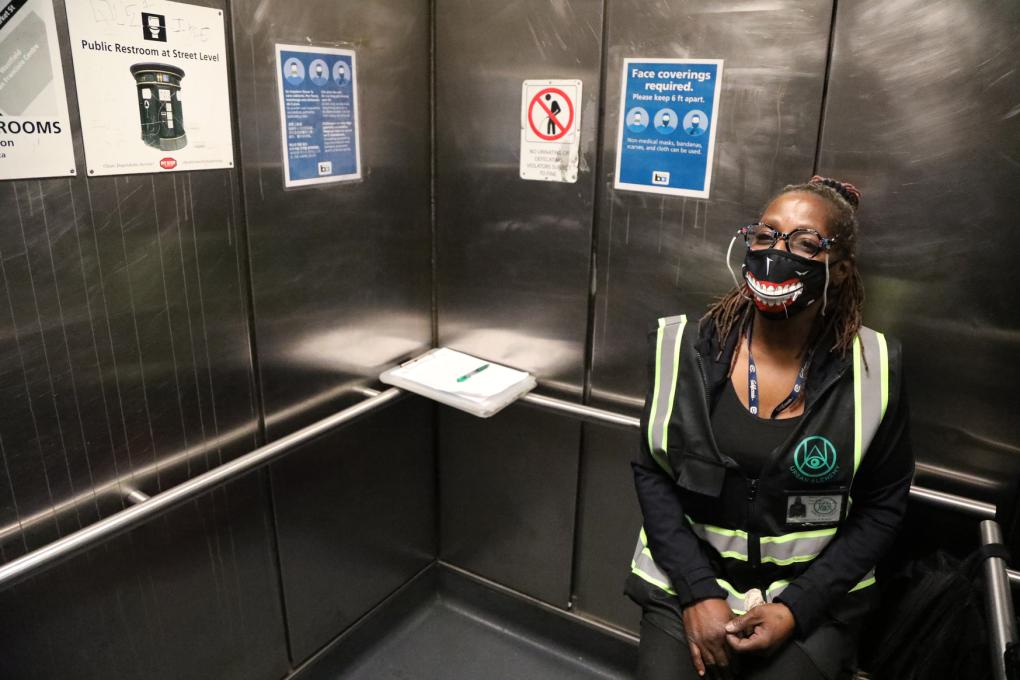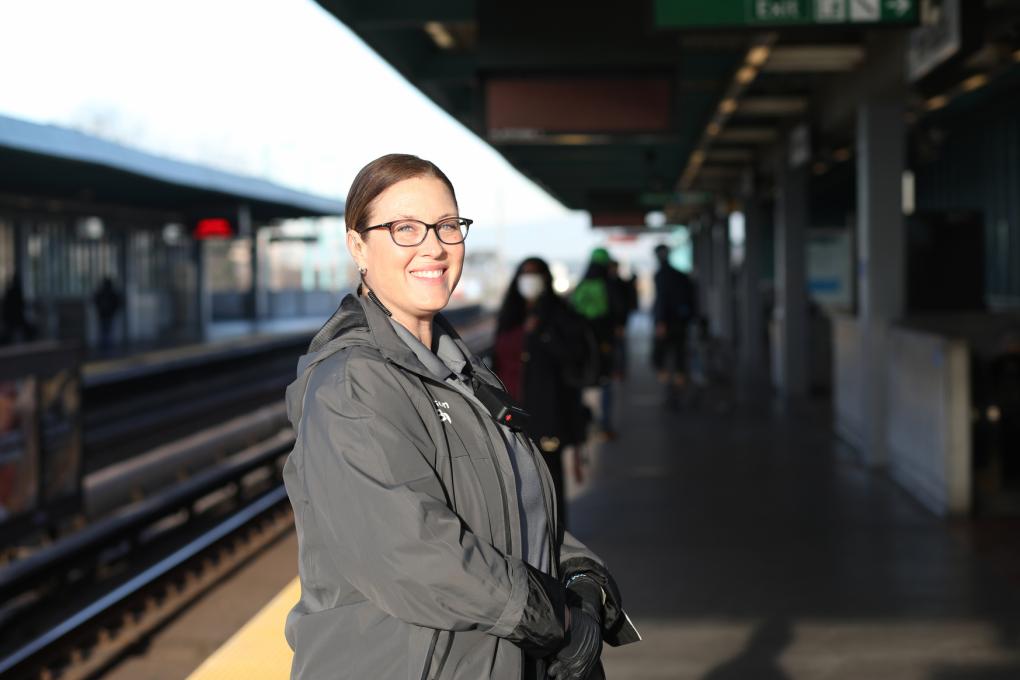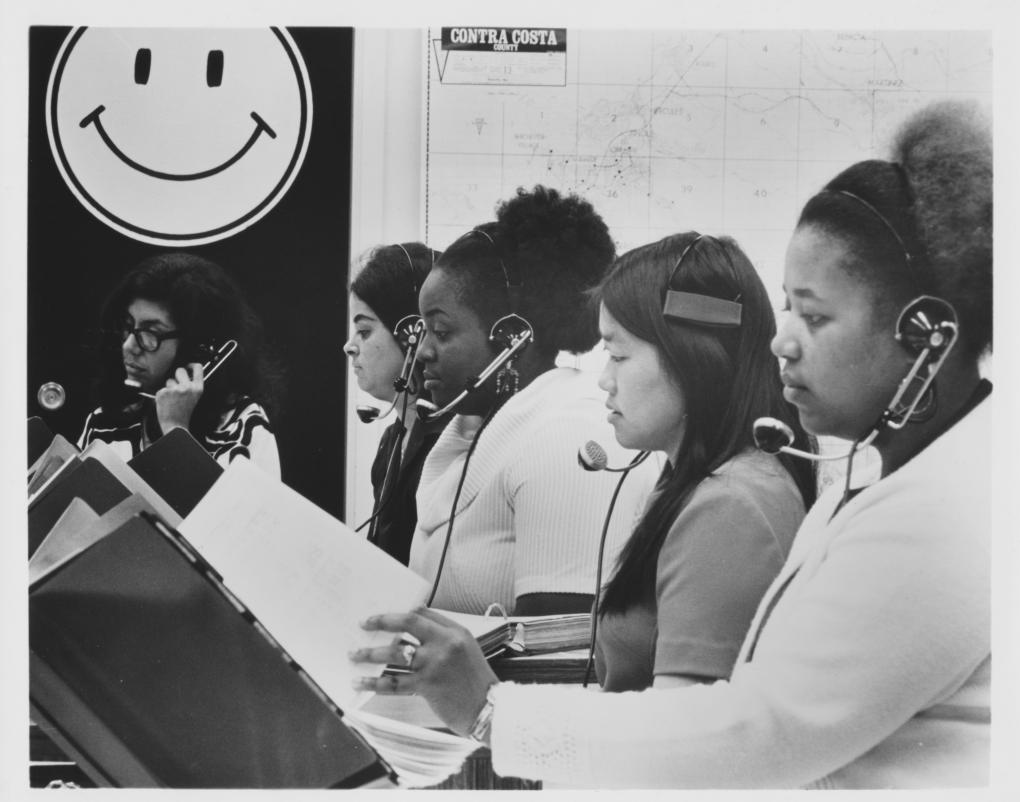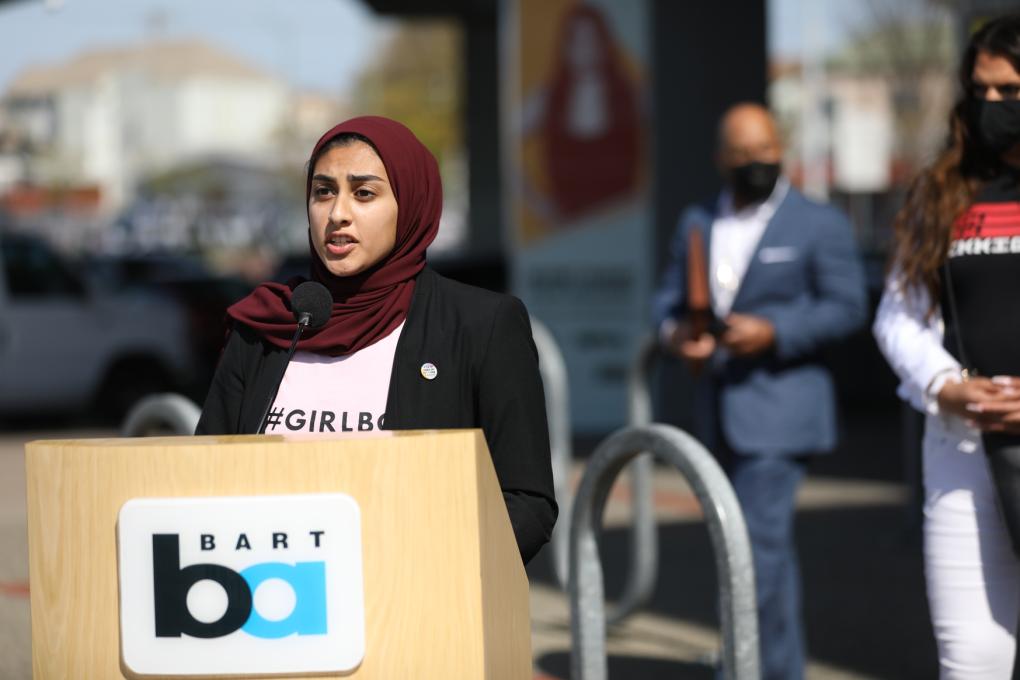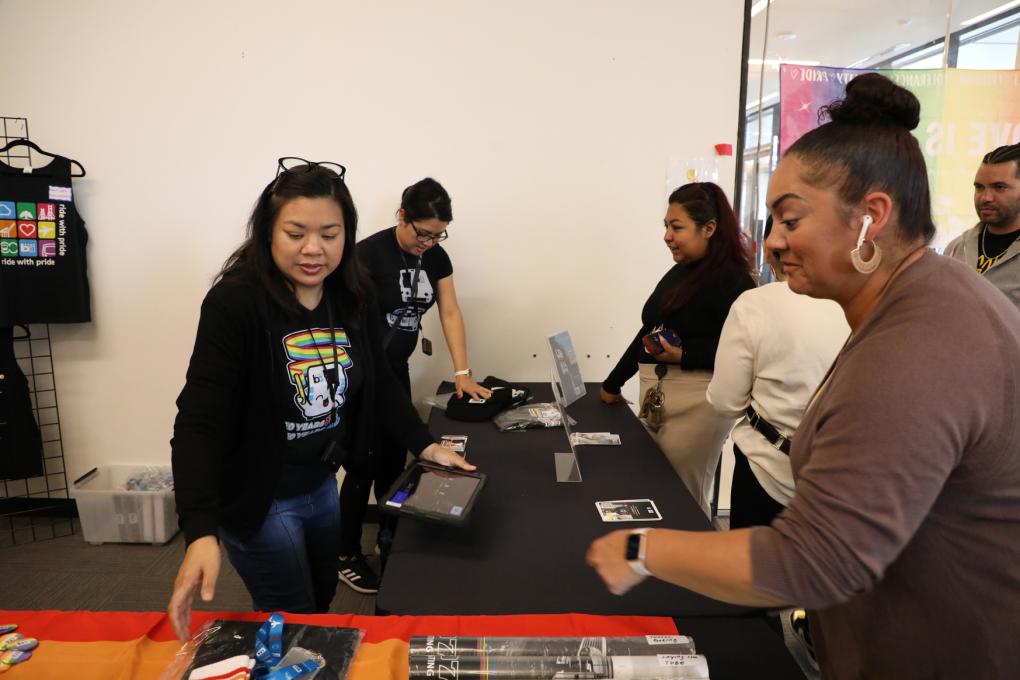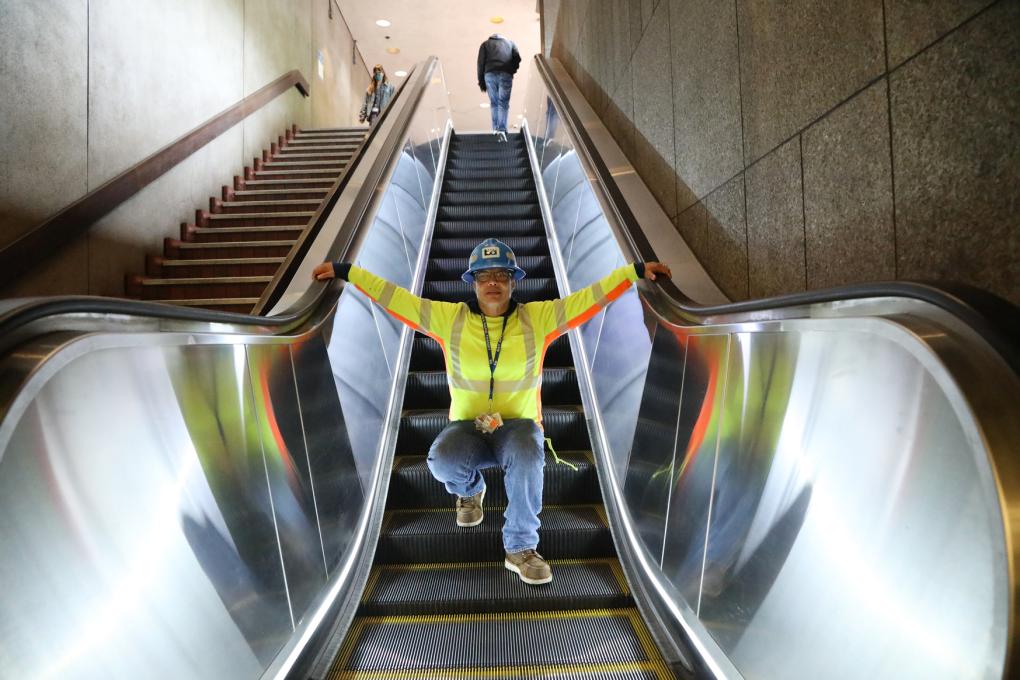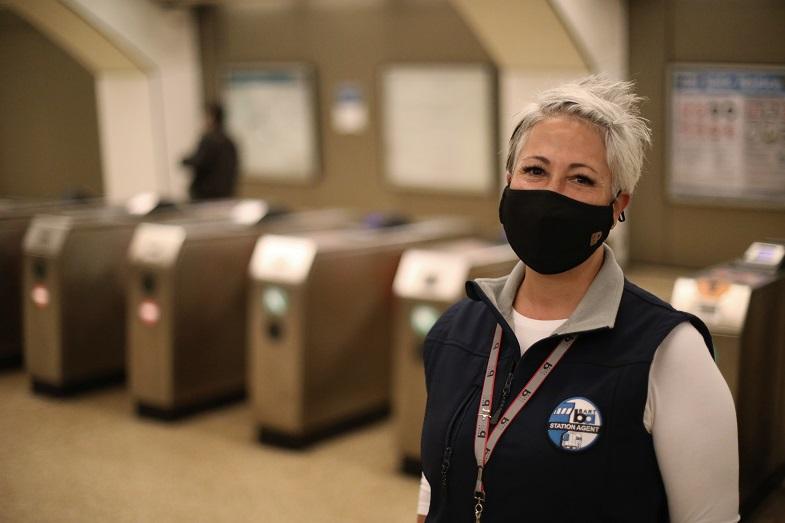Search Results
Oct. 30: BART x Yifang bubble tea Anime mascot fan pop up event at Colma Yifang location

In a first-of-its-kind in the United States partnership between a government transit system and a popular boba brand, BART is collaborating with Yifang Taiwan Fruit Tea Northern California by featuring BART’s anime mascots on drink menu items and limited-edition collector cupsleeves as well as in-store photo spots. Collaborations between beverage brands and hit anime series and movies are wildly popular and BART is jumping in on the trend to engage new riders and promote BART to new audiences.
The collaboration and cupsleeve giveaway will launch on Wednesday, October 16, 2024, at four Yifang locations in the Bay Area all located within one mile of a BART station. The collaboration will last through the month of October or while supplies last.
The exclusive cupsleeves feature four of BART’s Anime Mascots— Baylee and her goat fan, Nimbus, Mira, and Jasmine enjoying fruit tea drinks, the BART logo, as well as Yifang’s logo. Yifang locations have paired special menu combinations with BART's Anime Mascots by matching their color palettes or character personalities.
The four locations include:
- University of California, Berkeley Yifang: 2516 Bancroft Way, Berkeley (near Downtown Berkeley BART Station)
- Colma Yifang: 4923 Junipero Serra Blvd, Colma (near Colma BART Station)
- San Francisco Chinatown Yifang: 870 Washington Street, San Francisco (near Montgomery BART Station)
- Walnut Creek: 1349 Locust St, Walnut Creek (Near Walnut Creek BART Station)
Planned pop-up events:
Inspired by fan events celebrating anime, gaming, and K-pop, BART is planning pop-up events at two Yifang locations featuring the BART Anime standees and special giveaways. For these planned events, anyone who comes in a full-body BART themed costume or BART Anime Mascot cosplay will receive a BART Anime sticker sheet with their cupsleeve, while supplies last.
- Wednesday, October 16th at the Berkeley Yifang location 3pm-6pm.
- Wednesday, October 30th at the Colma Yifang location 5pm-7pm.
“As BART works to strengthen relationships with youth and young adults to increase ridership, this collaboration is meant to surprise and delight potential riders and offer an immersive consumer experience that appeals to anime fans,” said BART’s Chief Communications Officer Alicia Trost who launched BART’s Anime Mascot Program to promote public transportation use, especially among youth riders, a growing and reliable ridership demographic.
“This cross-promotional marketing opportunity is a way to celebrate our classic Taiwanese flavored drinks as well as BART’s anime mascots that were inspired not just by Bay Area culture but also transit systems in Taiwan which use anime mascots to connect with their communities,” said Alexus Lopez, Marketing Manager for Yifang NorCal.
Yifang offers gourmet Taiwanese tea drinks at multiple locations across the Bay Area. Their most sought-out drink, Yifang Fruit Tea, uses home-made organic cane sugar, seasonal fresh fruits, and natural ingredients.
“If you see me on a train, ignore my dog”: How to treat service dogs and their handlers with respect on BART
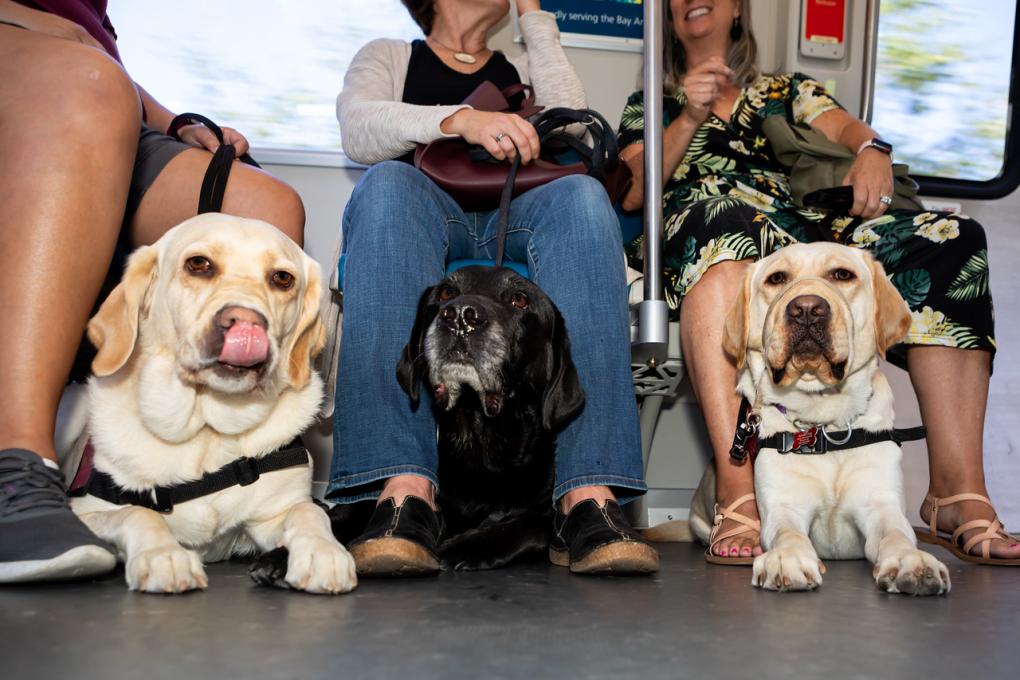
Early Alert Canines service dogs on BART, from left to right: Scarlett with handler Alysia Santos, Handsome Ransom with handler Kathleen Fraser, Sheldon with puppy trainer Suzie Scher.
See our DOs and DON’Ts for pets on BART below.
TLDR: You may only bring a pet onboard and in stations if it is secured in an enclosed carrier made for the transport of animals. Animals on leashes are prohibited with the exception of trained service dogs. Service dogs are allowed off leash if their owners are unable to hold a leash and the animal is under voice command of their owner. Please contact BART's Access and Accessibility Department for more information.
Service animals are defined by the American Disabilities Act as any guide dog, signal dog, or other animal individually trained to work or perform tasks for an individual with a disability. Emotional support animals are not service animals and must be in a carrier when on BART.
BART offers free BART rides for those training service animals on the system. Arrangements must be made with BART’s Customer Access Department beforehand.
Read more about our pets on BART rules at bart.gov/pets.
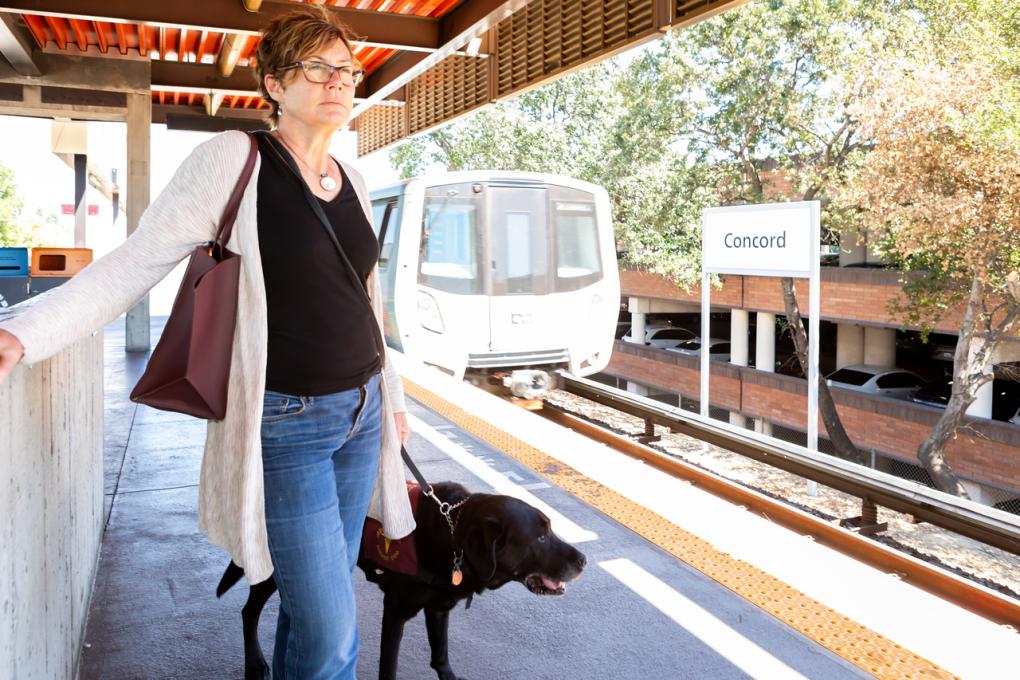
Kathleen Fraser and her service dog, Handsome Ransom, on the platform at Concord Station.
Dogs are cute. But some dogs have jobs to do, including when they’re riding BART.
Handsome Ransom is San Francisco resident Kathleen Fraser’s dog. He's got a big, goofy smile and soft black fur. Over that smooth coat, he wears a dark red vest with yellow embroidered text that reads: “Medical Alert Service Dog.”
Many of us see a dog out in the world and our brains scream, CUTE CUTE CUTE, MUST PET PET PET. Ransom, like all dogs, can be distracted however, and unlike all dogs, he’s specially trained to save his handler’s life.
“If you see me on a train, please ignore my dog,” Fraser said as a PSA to her fellow BART riders.
Fraser has type 1 diabetes, a lifelong condition where her pancreas doesn’t make any insulin, leading to high blood sugar levels. This can lead to a series of complications, including but not limited to nerve damage, heart attack, stroke, seizures, and in the most tragic cases, death.
In 2016 after a series of close calls, Fraser reached out to the Concord-based nonprofit Early Alert Canines in search of a service dog that would alert her when her blood sugar was dropping. The organization is one of a handful that trains medical alert dogs and connects them to people with type 1 diabetes.
Early Alert paired Fraser with Handsome Ransom, who quickly became her best friend and most steadfast companion. Wherever Fraser goes, Handsome Ransom comes too, including on BART rides. He has to; without Ransom by her side, Fraser's blood sugar could fall, and she might not even realize it. Ransom can detect blood sugar crashes sooner than any modern medical device and often before the person recognizes the signs of an oncoming drop, such as sweating, shakiness, dizziness, anxiety, intense fatigue, etc.
“Trained dogs pick up the scent of the chemicals your body releases when your blood sugar is dropping,” said Carol Edwards, the Executive Director of Early Alert Canines.
“As soon as they smell those particles, they go, ‘There it is!’ and they alert their handler with a simple lift of their paw,” Edwards said. When a dog gives the alert, their handler can pause, look at the number on their glucose monitor, “and make an informed decision on what to do next before they get to that low state where one of the first things to go is cognitive ability."
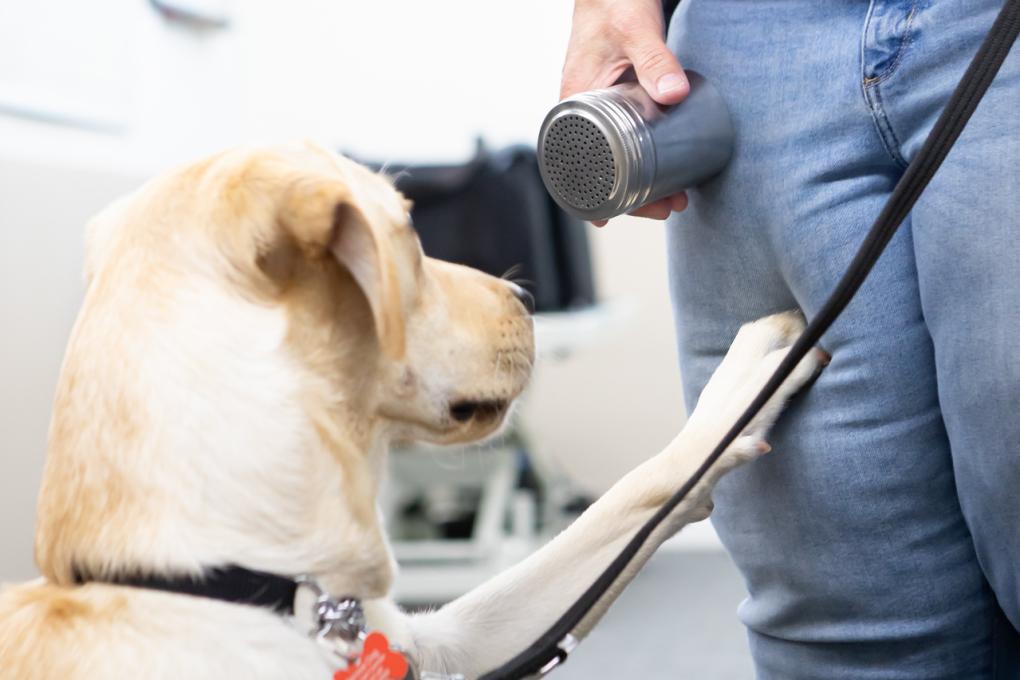
Service dog Scarlett correctly identifying a canister containing scent samples with a blood sugar level of 70mg/dL or lower at Early Alert Canines in Concord.
The dogs are scent trained for around six weeks using a 12-arm scent wheel, with each arm ending with a small canister with a perforated lid (think spice shaker). The scent samples within are collected from individuals with type 1 diabetes experiencing a blood sugar level of 70 mg/dL or lower. Once the dogs are familiar with searching the scent wheel, they undergo a series of 500 double-blind trials. In these trials, neither the trainer nor the dog knows which canister contains the target scent. In all, the process takes around six weeks.
Fraser said Ransom has alerted her thousands of times since they were first matched eight years ago. Sometimes, Ransom will give the alert more than a dozen times a day.
“What I wish people would realize is that service dogs provide medical support that is just as important as a wheelchair or a white cane or hearing aid," Fraser said. "Yes, they are adorable, and yes, we all want to go up and squish them and all of that. But when they're out, they’re in work mode, and they need to be attending to their person.”
Many don’t realize this because they just don’t know. And that’s exactly why Fraser is sharing her experiences, including some that are painful to remember.
Fraser used to take transit to work in San Francisco all the time. But things became too challenging – and terrifying – when fellow passengers would consistently scold her for bringing a dog on transit or for using a seat reserved for disabled people in the front. Fraser often uses one of these seats as a safety measure for the dog because sitting against a wall limits the chances of someone trampling or stepping on him, thereby preventing him from doing his job. If the dog gets distracted or injured, it puts Fraser’s safety at risk.
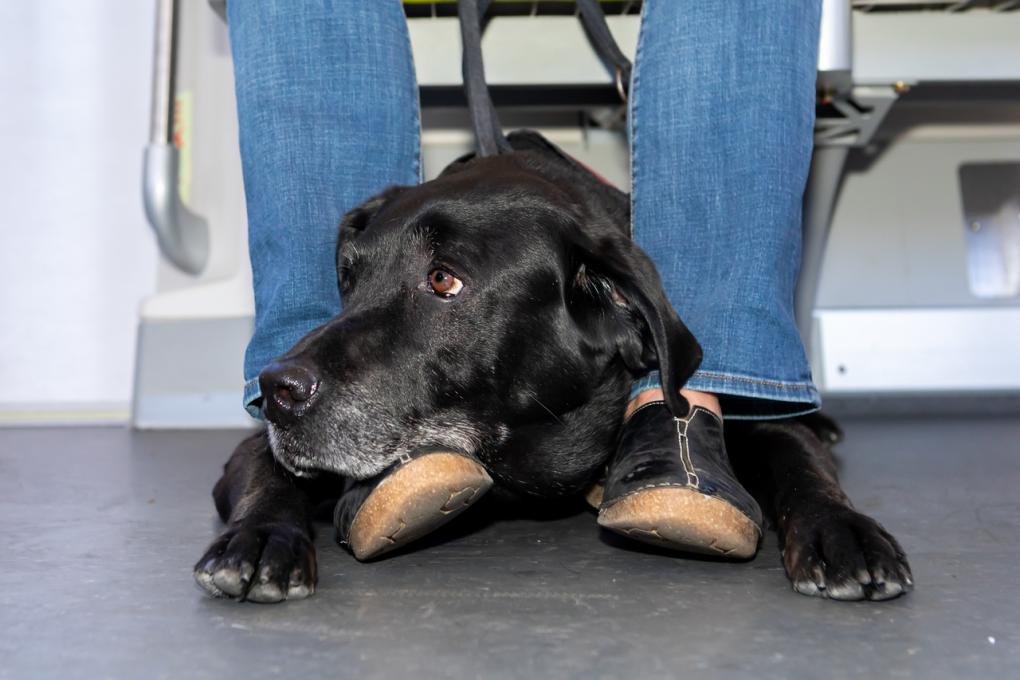
Handsome Ransom on BART between Kathleen Fraser’s legs in a seat against the wall.
"There have been many times where I'm sitting in one of the reserved seats and the public, for one reason or another, starts yelling at me about ‘How dare I sit in that seat, when XYZ person should have that seat,’” she said.
These encounters, on more than one occasion, spiraled into an “angry mob” situation, with people asking Fraser questions like: “What’s wrong with you? Why do you get to bring a dog on transit?”
“We live in a world now where there are many ‘fake’ service dogs,” Fraser said. “People are sensitive about it in San Francisco because we have strong laws around emotional support animals and renting apartments.”
"It's also complicated by the fact that my disability is somewhat invisible,” she added. “People say to me, ‘Well, you don’t look disabled,’ and I say, ‘What does disabled look like to you?’ Most people think ‘disabled’ refers to those with visible physical disabilities, but that’s not the case. And it’s caused me a heck of a lot of trouble.” According to multiple sources, the vast majority of disabilities are “invisible.”
Type 1 diabetes is a protected class under the Americans with Disabilities Act (ADA), which prohibits discrimination against those with disabilities in all areas of public life, including transportation. ADA defines service animals as any guide dog, signal dog, or other animal individually trained to work or perform tasks for an individual with a disability.
Dogs whose sole functions are to provide comfort or emotional support do not qualify as service animals under the ADA, and Fraser wants to be very clear: Ransom's job is not providing emotional support. That's an added bonus. People with diabetes are two to three times more likely to have depression than those without diabetes, and “having a dog who loves you unconditionally helps with that,” Fraser said.
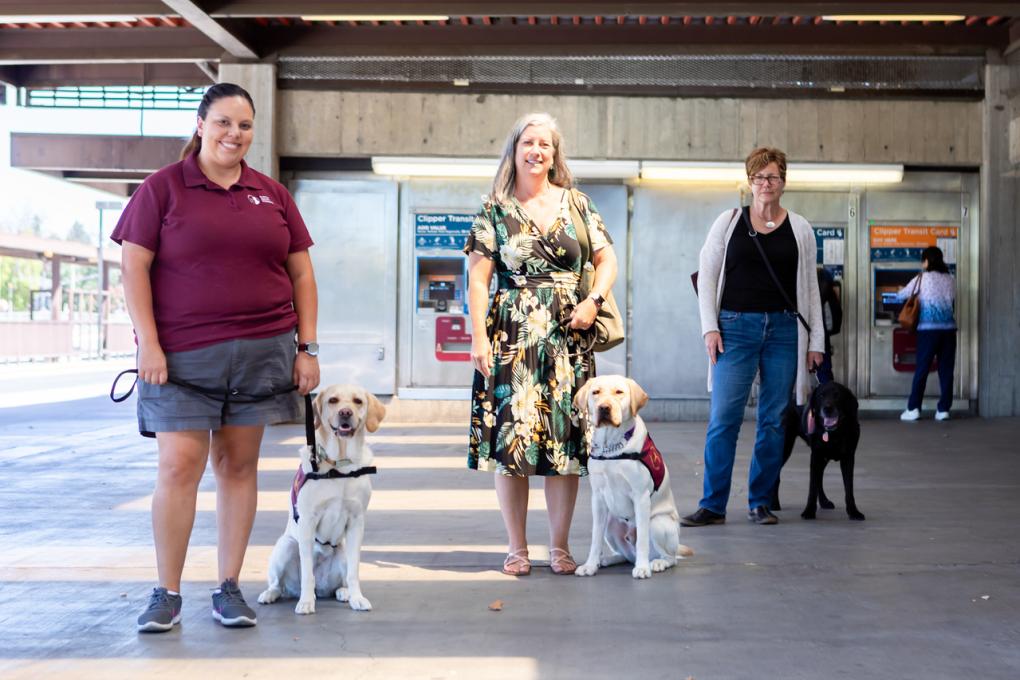
From left to right: Scarlett with handler Alysia Santos, Sheldon with handler Suzie Scher, Handsome Ransom with handler Kathleen Fraser. Pictured in the unpaid area of Concord Station.
When you encounter a person with a service dog, there are two questions you can ask. One, is the dog a service animal required because of a disability? And two, what work or task has the animal been trained to perform? People with service dogs do not have to disclose their disability.
Because of her traumatic experiences, Fraser no longer takes transit, instead opting to drive three miles to her office and pay for an expensive parking spot. Sometimes, that’s the way it is when you’re maneuvering around a world that is not designed with a diverse spectrum of disabilities in mind.
"This disability is vicious, it's volatile, it's unforgiving, it's cruel, and completely unpredictable,” Fraser said of type 1 diabetes. "There is research that says people with type 1 diabetes have to make 300 additional decisions a day just to stay alive.”
Early Alert Canines makes a point to train their dogs on public transportation because the animals’ future handlers may use it back home. 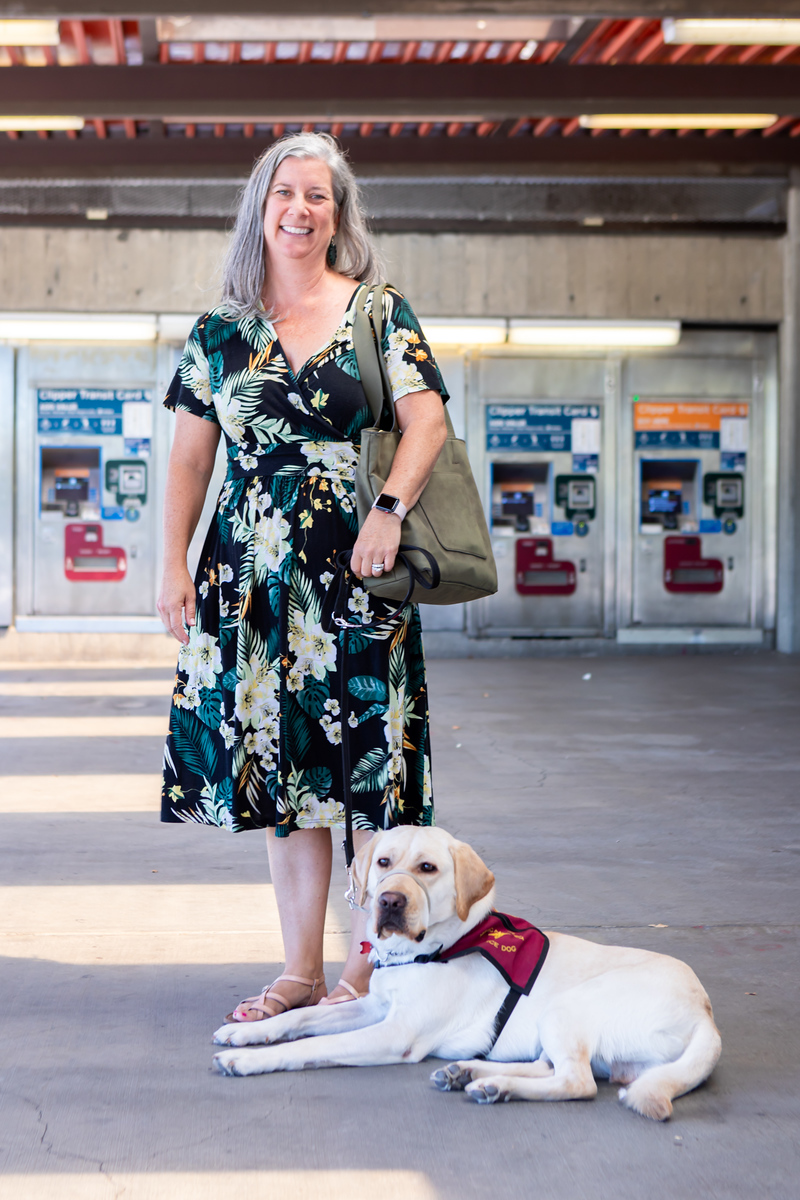
Suzie Scher (pictured on the right with Sheldon) is a volunteer puppy raiser, and she made sure her trainee pup, Sheldon, got some experience riding the trains. She recently took BART to Downtown Berkeley Station for a visit to the Ed Roberts Campus, a universally designed, transit-oriented campus that was created by disability organizations that share a common history in the Independent Living Movement of People with Disabilities.
“I wanted to make sure he's been on BART before he’s paired with his handler,” she said. “These dogs can be placed with people anywhere in the country – they could be riding the Chicago L or the New York subway, and they need to be prepared.”
There are many stimulants in a transit space – the click of the fare gates, the whoosh of a train pulling into the station – and puppy raisers like Scher ensure their dogs know what they’re getting into before they’re sent off to live with their owners.
Fraser said Ransom is a “champ on BART.” On a recent visit to Concord Station, Ransom serenely followed Fraser through the fare gate, walked up the stairs, and waited on the platform beside her until they got on a train. Onboard, Fraser found a seat against the wall, and Ransom deftly maneuvered himself underneath the seat, poking his head between the protective barrier of Fraser’s legs. He sat there serenely for the entirety of the ride.
Fraser has a few asks for her fellow passengers. As mentioned earlier, do your best to ignore Handsome Ransom – that includes not making eye contact with him. She also asks that you consider giving up your seat for her and Ransom on a crowded train.
“When we’re standing,” she said, “we have to put the dog between our legs and make sure the tail is not stepped on. We’re doing all this while holding onto the handrail, maybe holding onto a shopping bag or purse. It’s a lot to handle.”
It’s also important to not eat on the train and in the paid area of the station, and not just because it's against BART’s rules. Even miniscule crumbs can pull a service dog away from his task. Afterall, they’re dogs, and when they’re paying attention to food on the floor, it means they’re not working.
“I want him to have his full attention on his person, so if their levels change, he can alert them right away,” Edwards said. “I don’t want him distracted by a piece of dropped hamburger.”
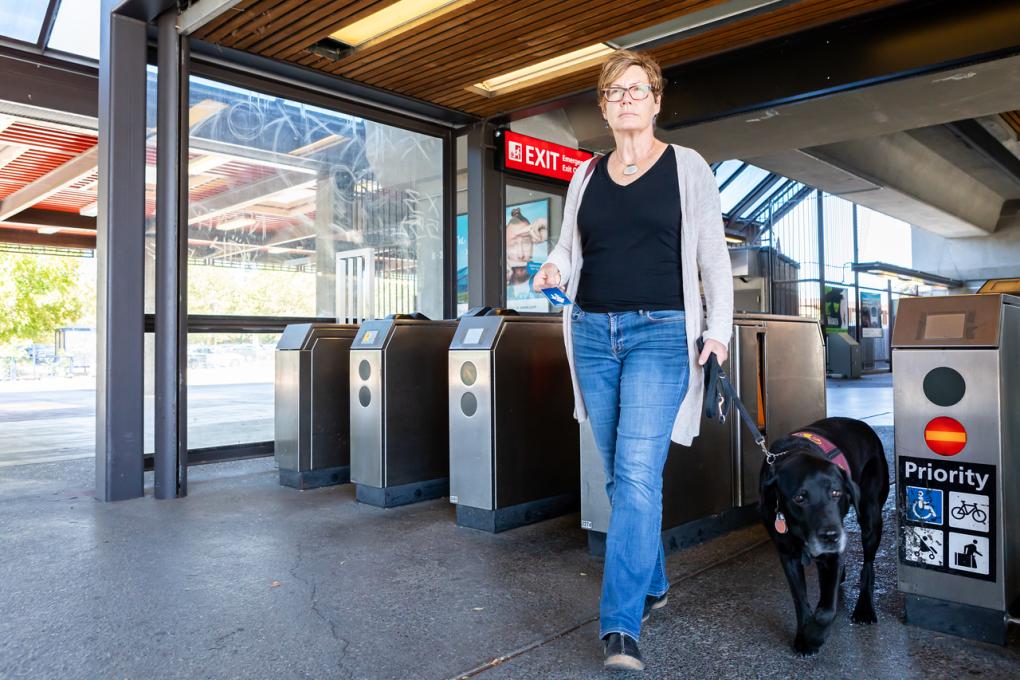
Kathleen Fraser and Handsome Ransom walk through the fare gates at Concord Station.
Most importantly, Fraser asks that you follow BART’s pet policy. Pets are allowed on BART, but they must be properly secured in an enclosed carrier manufactured for pet transportation. In turn, that carrier must be kept off the seats and cleared from the aisle (keep service animals off the seats and out of the aisles, too). Pets on leashes are prohibited.
If these policies are not followed, it puts people with disabilities in danger, as well as their fellow passengers. Bringing your pet on BART without a carrier is inviting interactions with potentially life-threatening consequences, whether it’s Ransom failing to alert Fraser of a blood sugar crash or a poorly behaved dog biting a passenger. A person found to be in violation of BART’s pet policy could be issued a citation and/or ejected from the system.
So far, Fraser hasn’t had any problems on BART, but that doesn’t mean she’s not constantly calculating what could happen when she steps on a BART train or anywhere out in public for that matter.
“If you bring your dog on BART and it behaves badly, people remember that bad experience. Then, when I get on BART with my service dog, they take it out on me,” she said. “It makes everything harder.”
Added Scher: “Follow the rules, and if you won’t do it for humans, do it for the service dogs."
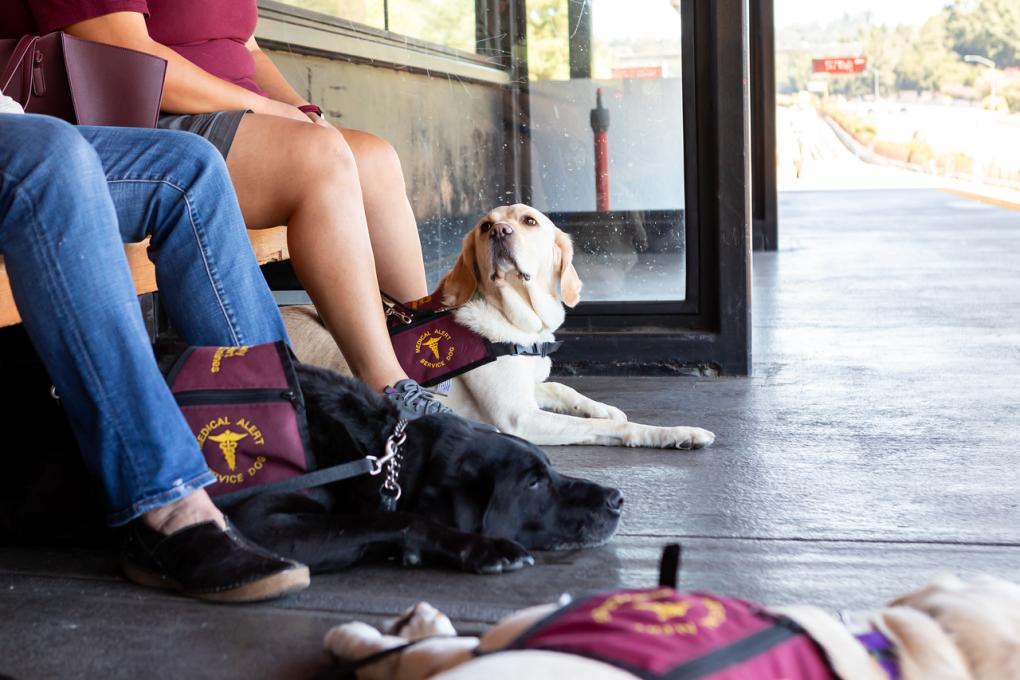
Service dogs reposing on the platform as they wait for a train at Concord Station.
The DOs and DONT’s of Pets on BART
DO bring your non-service animal on BART in an enclosed carrier made for transporting pets. This includes not just trains, but stations as well.
DON’T put the carrier on a seat or in the aisle and keep your service animal off the seats and out of the walkways.
DO be considerate of fellow patrons who may have allergies or fears around certain animals.
DON’T bring a leashed pet onboard (with the exception of trained service animals). Service dogs are allowed off leash if their owners are unable to hold a leash and the animal is under voice command of their owner.
DO remember that not all disabilities are as visible as others.
DON’T pet a service dog, offer it a treat, or distract it in other ways. Try not to acknowledge the animal at all (we know it’s hard).
DO be aware that Station Agents can advise owners that their service animals may not enter a station if the animal is behaving in a way that may threaten other passengers.
DON’T forget that BART Police may issue a citation and/or eject a person from BART if they are found to be in violation of BART’s pet rules.
DO remove all food and trash from trains and deposit it in station receptacles to ensure service animals like Ransom don’t get distracted.
DON’T ask a person what disability they have that enables them to have a service animal. Stick to these two questions: “Is this a service animal?” and “Is this animal working for you?”
DO consider giving up your seat to a person with a service animal to make things easier for them.
DON’T take service dogs on escalators, which could potentially pinch their paws. We recommend using the stairs or elevators. (This is a BART recommendation; California law does allow service dogs on escalators.)
DO be aware that service dogs in training may accompany their disabled owners or authorized trainers on BART. No service animals in training, other than dogs, are allowed on BART on leash or harness.
DON’T bring an emotional support pet on BART unless it is in an enclosed carrier. Emotional support pets are not service animals, per the ADA.
DO reach out to BART’s Customer Access Department, which can arrange free BART rides for those training service animals on the system.
BART hosts inaugural Girls in Motion Fall 2023 Summit to inspire young people to explore careers in the transportation industry
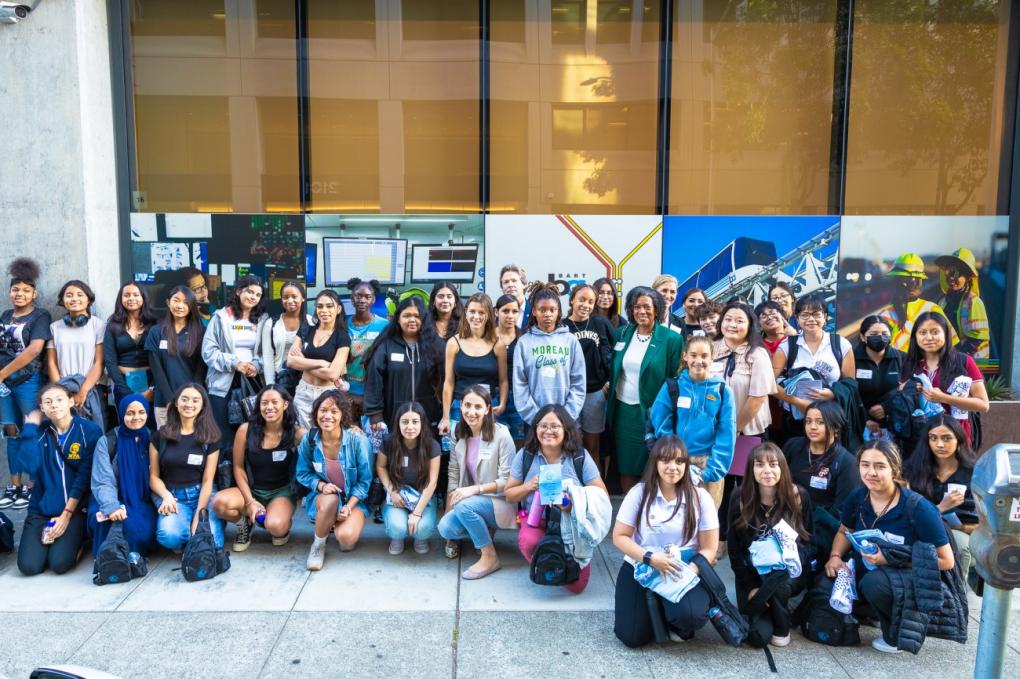
A photo of the attendees who participated in the Girls in Motion Fall 2023 Summit, hosted at BART Headquarters on Thursday, Oct. 19, 2023. Photo courtesy of Conner L’Hommedieu of Kimley-Horn.
Transportation leaders from across the Bay Area came together recently to share their passion for transit and inspire young people to explore the industry as a potential career.
On Thursday, Oct. 19, BART hosted the inaugural Girls in Motion Fall 2023 Summit, organized by the American Council of Engineering Companies (ACEC), California, Bay Bridge Chapter, and WTS San Fransico Bay Area Chapter, an international organization for women in transportation.
“The summit was a great opportunity to collaborate with our external partners and provide a platform of exposure for high school girls and specifically those from marginalized communities,” said Cynthia Fields, Supervisor of Workforce Development at BART and a member of the summit planning committee. “We want Gen Z to have this level of awareness as they consider their futures. It’s important for our girls to see people who look like them in the workplace, especially powerful women.”
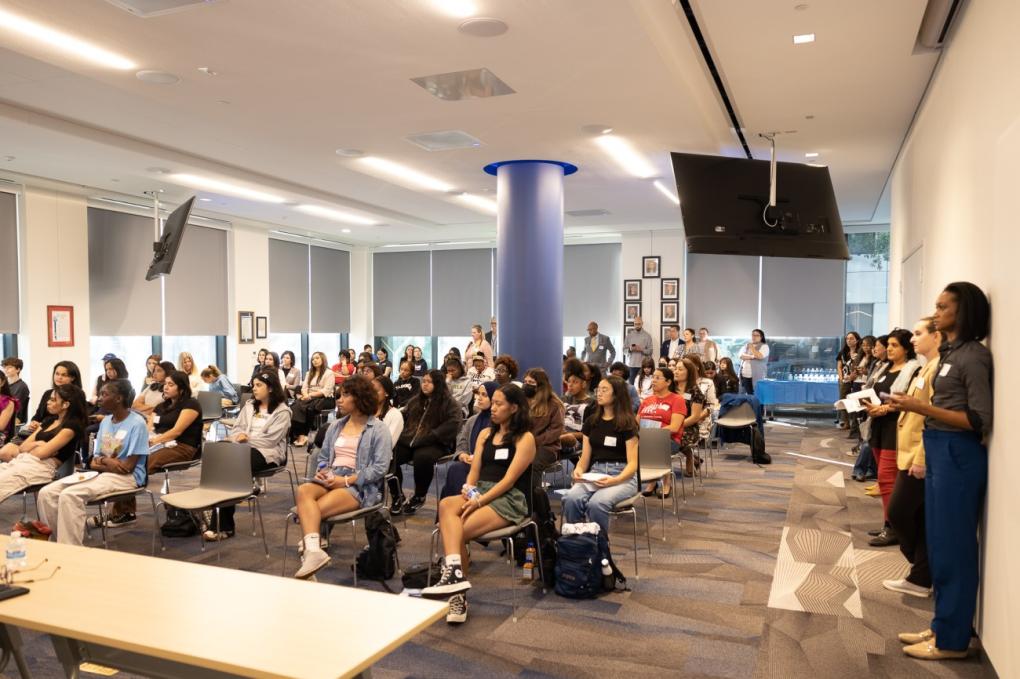
The standing-room only audience during the Girls in Motion Fall 2023 Summit, hosted at BART Headquarters on Thursday, Oct. 19, 2023. Photo courtesy of Conner L’Hommedieu of Kimley-Horn.
Dozens of young women, mostly high school students, attended the rousing summit in BART’s boardroom. Many attendees are participants of Girls Inc of Alameda County, located just a few blocks down the street from BART HQ. Girls Inc. previously visited BART in March of this year to learn about engineering on International Women’s Day.
The focus for this event was even broader in scope, and many of the transportation leaders who spoke noted the expansiveness of the transit industry and how its workers come from a surprising diversity of professional backgrounds.
“There are so many different fields in transportation,” said Tess Lengyel, Executive Director of the Alameda County Transportation Commission. “Transportation is not just one thing; there are attorneys, communications professionals, planners. The list goes on.”
Lengyel spoke during the opening session, a panel with fellow transit executives Bob Powers, the General Manager of BART, and Beverly Greene, Executive Director of External Affairs, Marketing and Communications at AC Transit. Michele DiFrancia, President of ACEC-CA, Bay Bridge Chapter, moderated the inspiring conversation.
Each executive espoused their passion for transit and some of the surprising delights of working in the industry.
At the opening of the session, Powers cited some data points to get the girls fired up. Thirty-four percent of BART staff are eligible to retire, he said, stressing the need for more young people with fresh perspectives and ideas to join the industry. He also noted that 25% of the BART workforce are women or nonbinary.

(From left to right): Beverly Greene, Executive Director of External Affairs, Marketing and Communications at AC Transit, Tess Lengyel, Executive Director of the Alameda County Transportation Commission, Bob Powers, General Manager of BART, and Michele DiFrancia, President of ACEC-CA, Bay Bridge Chapter, photographed during the Girls in Motion Fall 2023 Summit, hosted at BART Headquarters on Thursday, Oct. 19, 2023. Photo courtesy of Conner L’Hommedieu of Kimley-Horn.
“We have to do better as an agency to get that number up,” he said. “A job in transit pays well, has good benefits, and means something to the community. There’s so much opportunity in transit.”
He also stressed the stability of the industry, which is often insulated from fluctuations in the economy. Layoffs, he pointed out, are rare in transportation compared to many other industries.
Greene said she wasn’t even aware of transit as a career when she was in high school. Her advice to aspiring transit professionals was practical: Meet with your college counselor at least every other week and get involved with extracurriculars. She also shouted out the many women she’s had the opportunity to work with and learn from throughout her career. “And these women are running the agencies!” she said.
A career tracks panel followed the discussion, featuring transportation professionals from a mix of fields, including, from BART, Alicia Trost (Chief Communications Officer), Sadie Graham (Director of Link21), Phoebe Cheng (Group Manager for Civil, Structural, and Track Engineering), and Ni Lee (Group Manager for Integration Engineering). Sarah Hersom, Vice President of HNTB and Jon Porterfield, Executive Vice President of Anser Advisory, also joined the discussion.
“Working at BART is so exciting,” said Cheng. “You see it all, and it takes all kind of skillsets.
Graham shared her unique background – she studied landscape architecture in college – and how her diverse experiences have served her in career. She also pointed out that after ten years of public service, your college loans are taken away. Graham herself said her loans were recently erased.

Tera Stokes-Hankins, Chief Transportation Officer at BART, assists attendees in building popsicle stick bridges during the Girls in Motion Fall 2023 Summit, hosted at BART Headquarters on Thursday, Oct. 19, 2023. Photo courtesy of Conner L’Hommedieu of Kimley-Horn.
At the end of the discussion, the young women engaged in a team STEM bridge-building activity with popsicle sticks that put their science, technology, engineering, and math skills to the test.
Arden Sorensen-Waod, a tenth grader at Piedmont High School, said she learned a lot of surprising facts at the summit.
“I’m interested in urban planning and community service. Maybe transit, too?” she said. Her biggest takeaway was realizing that “you can start in one field and end up in another one.” She was also excited that so many efforts were being made in the industry to connect with a younger audience.
As Powers noted during the panel: “Youth are the future of public transit. We want to hear your ideas – and we are listening and implementing them.”
BART has many opportunities for young people to learn about the transportation industry, including a robust Summer Internship Program (info flyer here) and youth tours, a program that is slated to relaunch in the late fall of this year. For more information, email [email protected].
Saturday, Oct. 12: View garments created from retired paper tickets at BART’s headquarters for Oakland Style Week

On Saturday, Oct. 12, BART will display a selection of garments created from retired paper tickets at BART Headquarters as part of Oakland Style Week. The outfits were created for BART’s Project Doneway fashion show, presented at Rockridge Station on September 14.
The unique garments were designed by fashion students from Oakland School for the Arts, Academy of Art University, San Francisco State University, and City College of San Francisco. The students created their looks using more than 150,000 paper tickets collectively. BART retired the iconic tickets in 2023, and the fashion show provided an opportunity to reuse what would otherwise be shredded and recycled. Read more about Project Doneway and watch the show here.
BART invites the public to view the outfits on Saturday from noon to 5pm at our headquarters: 2150 Webster St., Oakland, just a few blocks from 19th St Oakland Station. The garments will be displayed in the front windows of the building on either side of the main entry doors, located at the top of the steps. There is an ADA-accessible ramp.
Members of the public will not be able to enter the building, which is accessible only by key card on weekends and monitored by security. We ask that you please respect BART staff entering and exiting the building.
What: Paper Ticket Dresses on Display
Why: Oakland Style Week
When: Saturday, Oct. 12, noon to 5pm
Where: BART Headquarters, 2150 Webster St., Oakland
September 14: BART is hosting a paper ticket fashion show to say goodbye to the old tickets and celebrate Transit Month

BART is hitting the runway this upcoming Transit Month to give a final send-off to our retired paper tickets that were a portal to our system for more than a 1 billion trips in the decades since BART’s inception.
We gave fashion design students from four local schools more than 150,000 paper tickets with one condition: transform them into high fashion.
The students from Academy of Art University, Oakland School for the Arts, City College of San Francisco, and San Francisco State University will strut their stuff and share their unique designs for a full-blown fashion show, “Project Doneway: A Farewell to BART Paper Tickets,” in the parking lot at Rockridge Station on Saturday, September 14, from 1pm to 3pm.
The show will feature more than 30 unique garments created by nearly 80 designers. Models range in age from 4 years old to 75! The garments will be judged by local fashion luminaries Charleston Pierce, Randy Wells, and Mary Campbell. Prizes will be awarded for 1st, 2nd, and 3rd place (in the high school, and college categories) and Best Use of Paper Tickets. Middle school students from Oakland School of Arts will display mini outfit designs, which the public will vote on before the show.
There will also be a special guest appearance from Sean Porter, who inspired the event with a dress made out of BART’s blue paper tickets.
There will be American Sign Language interepreters at the event, and we invite the deaf community to come out and enjoy!
“We gave our legacy cars a proper send off when they were retired and our paper tickets deserve the same treatment,” said Chief Communications Officer Alicia Trost, who came up with the idea as another way to engage youth and young adults in the Bay Area and to activate BART stations through art. “Our paper ticket designs have long shown up in artistic Bay Area cultural references. This event was inspired by a dress made out of BART’s iconic blue paper tickets by Sean Porter nearly ten years ago, and I wanted to offer students who rely on BART to get around the opportunity to showcase their talents.”
Project Doneway coincides with Transit Month, an annual celebration of the countless buses, trains, ferries, bicycles and people that make up the Bay Area’s vibrant transportation ecosystem. Throughout the month of September, members of the public can enjoy contests, prizes, panels, clinics, concerts, bar crawls, hikes and more across the region. Learn more about the special month hosted by San Francisco Transit Riders and Seamless Bay Area and the dozens of events happening throughout September on the Transit Month webpage.
During Transit Month, the public is encouraged to explore the region by taking local transportation. The month is hallmarked by a Ride Contest. Every ride you take on Bay Area public transit is an entry into the Transit Month raffle. Track your rides to earn badges, win prizes, compete against friends by signing up and logging rides at ridecontest.com
Some of the BART-related events this year include:
- Wednesday, September 4, 5pm, at Balboa Station: Sound Tracks free concert. Featuring Congolese drummer Kiazi Malonga, performing with full percussion band.
- Sunday September 15, 10:45am, at Downtown Berkeley Station: Hiking by Transit: Berkeley to Orinda via Siesta Valley. This hike will head up through Claremont Canyon, taking in majestic views of the Bay, before crossing over Skyline Boulevard into Siesta Valley and descending into Orinda. BART back or stay for Ice Cream at local favorite Loard's.
- Saturday, September 21, 2pm, at Pleasant Hill Station. BART and Bike to the Walnut Creek Walnut Festival: The Festival offers live music, a carnival, a showcase of local and regional artists, builders, food, craft beer garden, and more.
- Saturday, September 28, 11am, starting at Pittsburg/Bay Point Station and ending at Antioch Station: Bike East Bay Group Ride on the Delta de Anza Trail. Explore the paved, multi-use hiking, biking and equestrian trail that connects Concord, Bay Point, Pittsburg, Antioch and Oakley.
- Saturday, September 28, 12pm, at Downtown Berkeley Station Plaza: Downtown Berkeley Transit Month Rally. Come rally support for and learn about public transportation in Berkeley and the Bay Area.
- Sunday, September 29, 1pm, at Lake Merritt Station: The Craft of Transit: Craft Ride from Lake Merritt to San Jose Flea Market. Bring your favorite craft project to work on and make friends as we ride to the San Jose Flea Market. Gather at the Lake Merritt BART concourse at 1 p.m. then head down as a group to board the 1:27 pm rain to Berryessa / North San Jose BART Station. RSVP here.
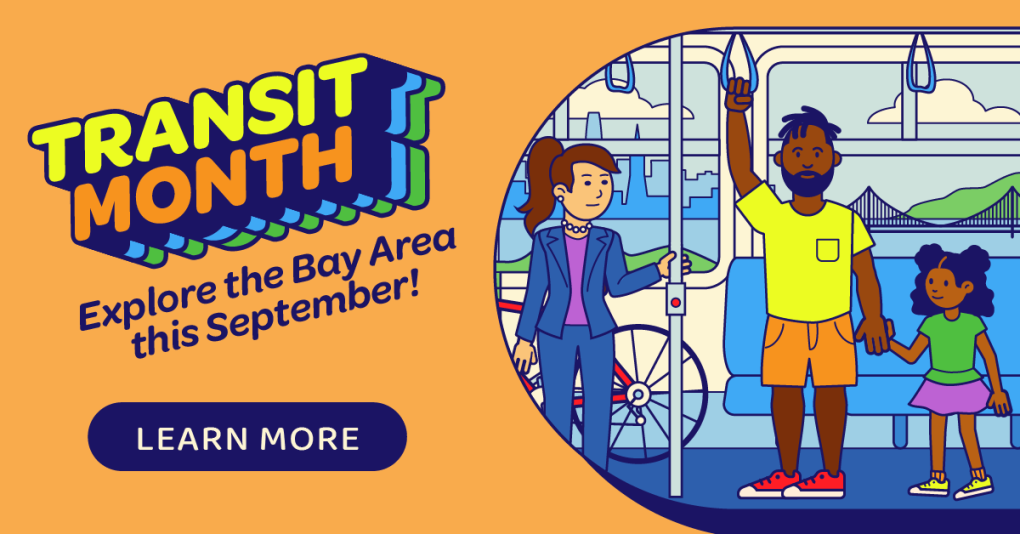
From the fields of the Central Valley to the hallways of BART, our new Director of the Office of Civil Rights fights for the public good
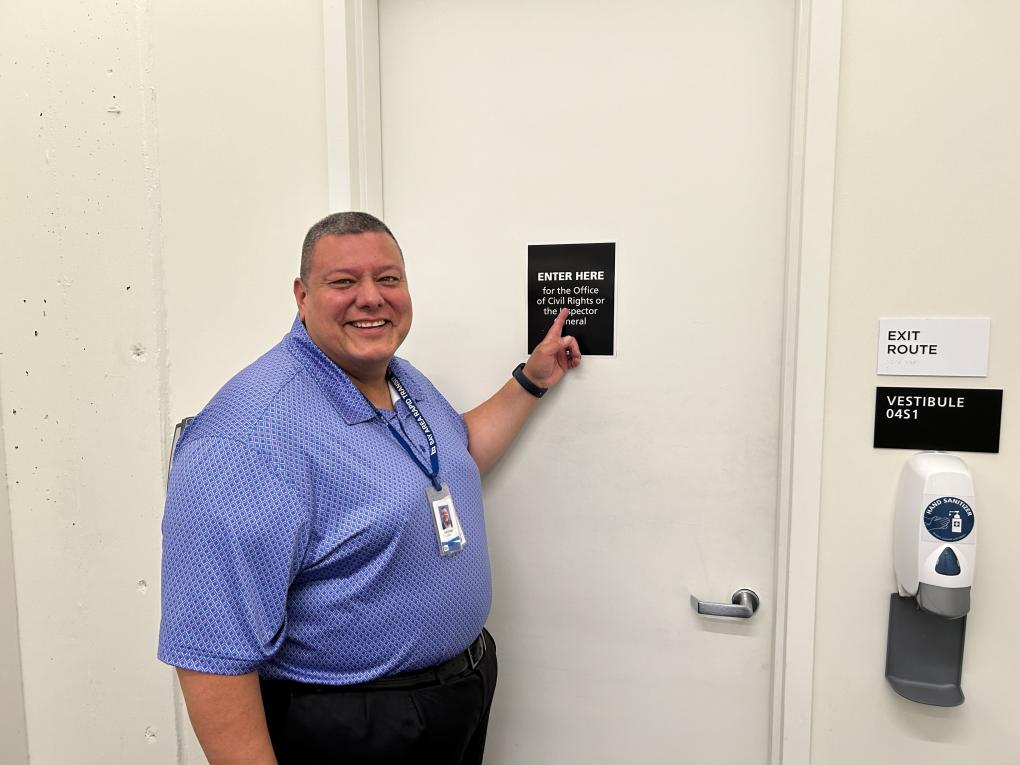
Rudy Garza, BART’s new Director of the Office of Civil Rights.
This Hispanic Heritage Month, BART is proud to celebrate employees with Hispanic and Latino heritage, who enrich our organization and the community at large. Over 15% of BART's workforce identifies as Hispanic and Latino, and we will be celebrating them throughout the month with additional stories and internal gatherings.
Hispanic Heritage Month runs from Sept. 15 to Oct. 15.
Rudy Garza and his fellow investigators from the U.S. Department of Labor were up at dawn one morning in the late 90s for a surprise inspection of crops in California’s Central Valley when they made a disturbing discovery.
“We saw kids working the fields,” said Garza, BART’s new Director of the Office of Civil Rights. “There were even infants out there.”
Garza’s team referred the children to social workers, seized the entire crop, and started an investigation that ended with significant civil penalties for the farmers, including back wages paid.
His time patrolling the fields in the 1990s was a turning point for Garza, the grandchild of Central Valley farm workers himself.
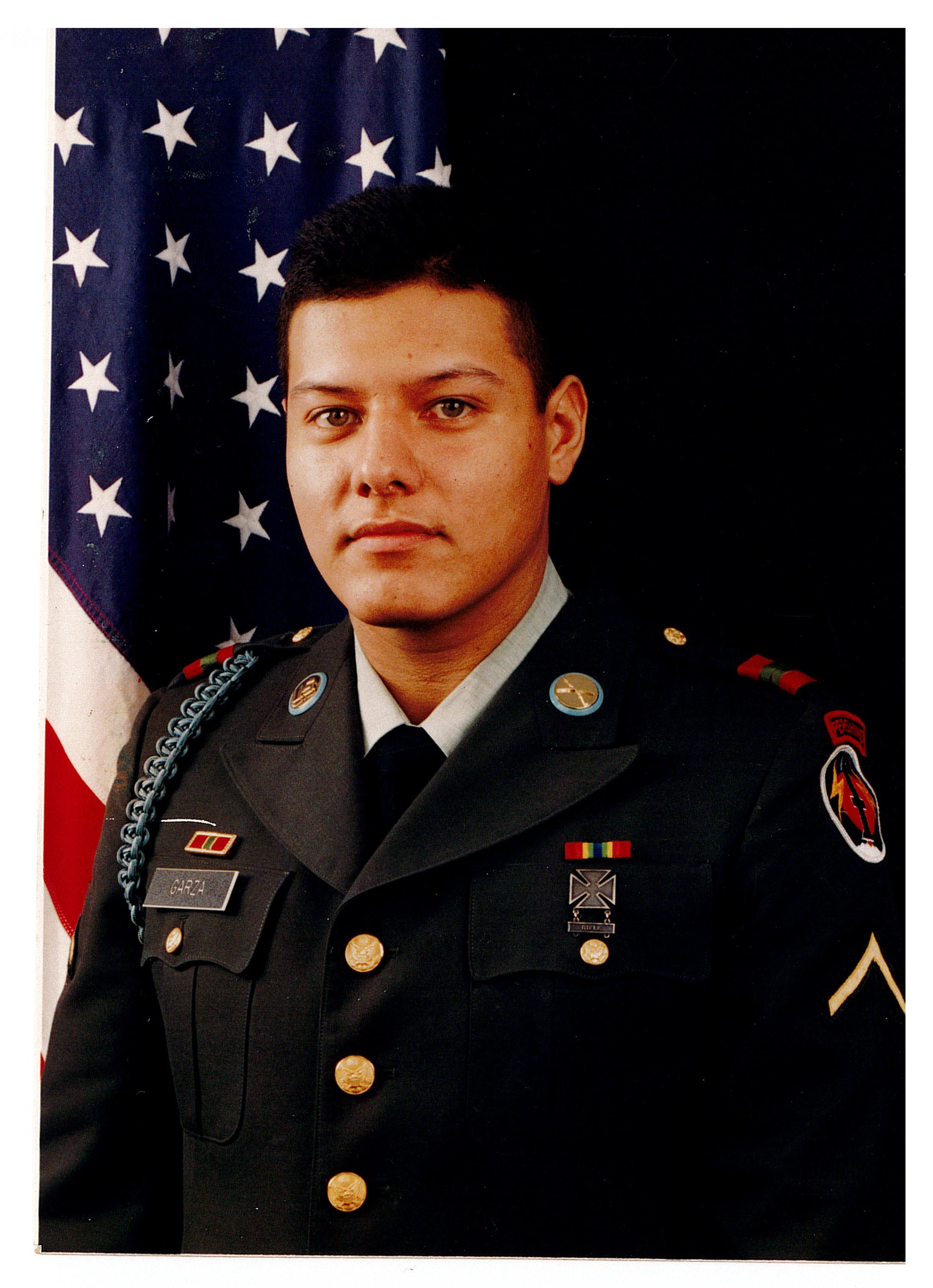
Garza is deeply influenced by his family’s journey to California. His grandmother immigrated from Mexico and met his grandfather, a veteran of World War II, in the southwest. They eventually made their way to Fresno, living in tents while working the fields. At the end of each work day, Garza’s grandfather would come home to construct the family’s future two-bedroom house with his own two hands.
“I am proud to come from an immigrant background and demonstrate that immigrants -- all immigrants, not just Hispanic immigrants -- are the backbone of this country,” he said, “where hard work and never giving up is the foundation of who you are.”
Garza entered the military at 17. While serving, he saw the Berlin Wall fall; Germany win the World Cup; and the decommissioning of the Pershing nuclear missile arsenal as the Cold War came to a close.
When Garza came back home, he had stints in law enforcement and even worked as a part-time high school football coach back in Fresno. But his work at the Department of Labor gave him a new sense of purpose.
“That was really my first taste of civil rights,” he said. “I really enjoyed that, protecting the public good.”
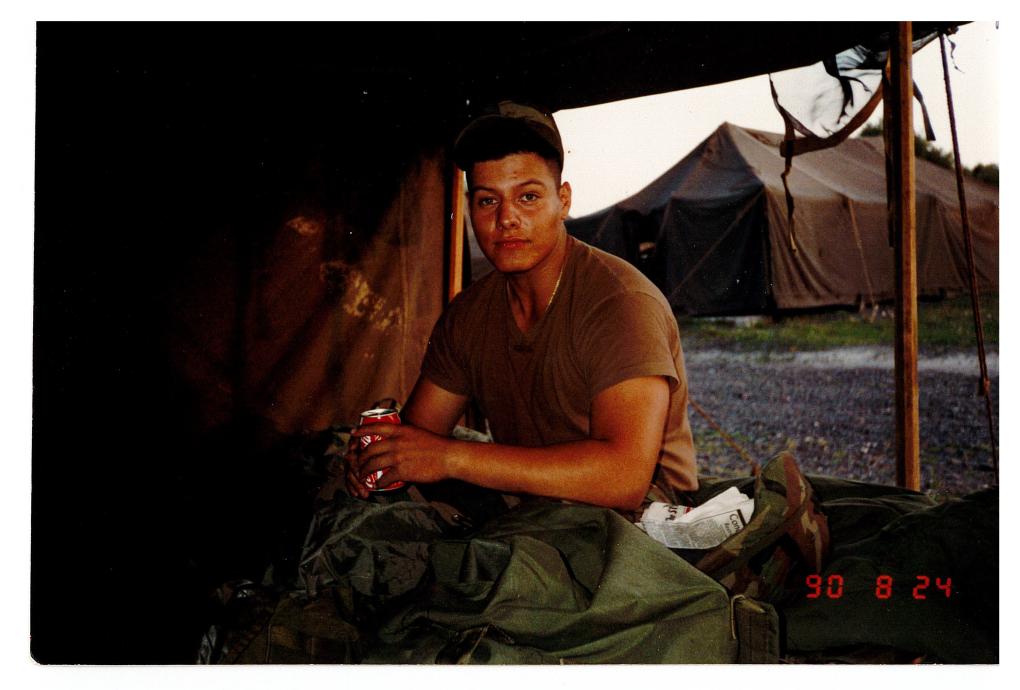
Rudy Garza during his time in the Army.
Garza’s career would take him on a tour across California government, always in roles ensuring complex laws were carried out to ensure the public’s rights were being upheld.
There was his time at the Fair Political Practices Commission, investigating campaign finance violations. Then he worked to ensure incarcerated people received proper care at the California Correctional Health Care Services. That was followed by a job as a manager at the State Department of Public Health, where he made sure patients were receiving proper nursing care. Just before arriving at BART, he worked as the California Highway Patrol’s Civil Rights Officer.
Garza is thrilled to join BART, a large, complex organization with a strong public mission.
“We ensure that everyone has equal access to BART’s programs, our trains, the ability to contract with us,” he said of the Office of Civil Rights.

Top: Rudy Garza with this family during his swearing in ceremony as a Fresno County Sheriff's deputy. Bottom: Rudy with his younger brother.
Garza has been impressed with the level of expertise and depth of talent at BART, not just among the Office of Civil Rights staff but across the District.
“They're all very highly intelligent people. They see beyond the bend in the curve,” he said of his colleagues.
Garza sees the Office of Civil Rights playing a big role in BART’s continued success and sustainability in the Bay Area.
“I am committed to ensuring we provide contracting opportunities for small and disadvantaged business enterprises, along with women- and minority-owned business enterprises to help BART continue to provide safe, reliable, and clean transit service to the residents of the communities we serve.”
During Hispanic Heritage Month, Garza likes to return to Victor Villaseñor's epic novel Rain of Gold. It’s a tale of magical realism and a family’s saga of struggle crossing the border and making a life in the U.S. It also serves as a reminder that the Hispanic community is not a monolith. Whether you are Cuban American, Puerto Rican, Latino, Latinx, Chicano -- there is a rich mix of heritages and backgrounds that make up this diverse community and are celebrated during Hispanic Heritage Month.

Rudy commutes by BART and Capitol Corridor from Sacramento.
Pittsburg Center
We want to hear from you! Tell us your favorite BART story and enter to win a $100 gift card
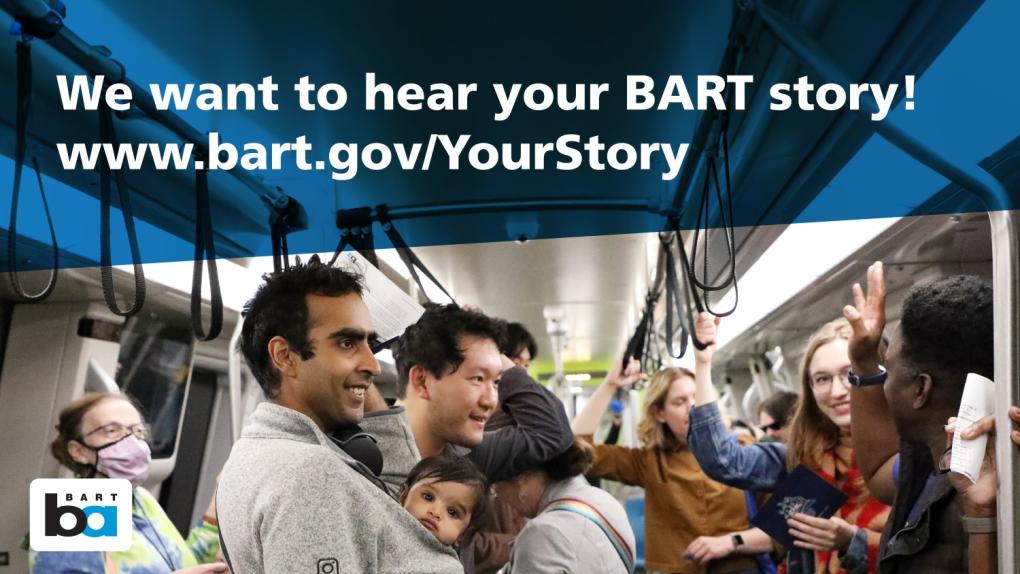
On Tuesday, Sept. 5, 2023, BART is launching a call for riders’ BART stories. We want to hear what BART means to you and gain insight into how we can continue to improve.
Do you have a favorite BART memory? Have you met a dear friend or life partner aboard a train? Did you take BART to a seminal life event? Have you been sitting on a unique idea to improve the system? We’d like to hear it.
To answer our questions, visit bart.gov/YourStory. We may contact you to learn more about your BART experience for future articles and communications (but only if you give us permission). You have the option to remain anonymous or share select information. Once you've answered the questions, you can enter a drawing to win one of three $100 e-gift cards. We’ll be sharing these stories in the coming months.
This call for stories is one aspect of our Role in the Region Study, which provides insight into emerging trends and outlines BART’s benefits to the Bay Area through illustrative data, personal narratives, and factsheets, culminating in a comprehensive final report. The final report is anticipated to be completed in Spring 2024. You can keep up to date with the project and explore factsheets at bart.gov/RoleintheRegion.
These materials highlight BART’s essential role in the region’s success as well as the compelling need for the continued funding and support of this essential transportation system. This study further develops the analyses and values illustrated in BART’s Transit Saves campaign and builds upon the findings from the 2016 Role in the Region Study.
This Transit Month, ride BART and tell us what it means to you!
Answer the questions and share your story at bart.gov/YourStory.
Take BART to Oakland Museum's 15th Annual Dias de los Muertos Celebration
Dancing skeletons and sugar skulls return as the Oakland Museum of California hosts its 15th annual Días de los Muertos celebration. The exhibition opens Wednesday, October 8, continuing through December 7. Guest curator Fernando Hernández titled the exhibition "Evolution of a Sacred Space: Días de los
Women's History Month 2024: BART celebrates the trailblazing women who have shaped our world from past to present
Today, March 1, marks the beginning of Women’s History Month, a time to recognize and celebrate the vital role women have played – and continue to play – in American history, including the history of public transportation, which has been shaped and transformed by women.
BART is home to an amazingly diverse workforce with women serving in crucial roles across the agency, from trackworkers and train operators to executives and our Board of Directors, which is composed of a majority of women.
To spotlight just a few exceptional women in the BART family:
Tera Stokes-Hankins is the first woman to serve as Chief Transportation Officer at BART. Tera started as a part-time station agent in 1995 nearly fresh out of college. Since her hiring, she has been promoted six times! Tera says she is motivated to work hard each and every day because “if BART’s not running, that means people can’t get to an interview or an appointment or class. To get up every day and make sure we’re ready to go and putting our best foot forward – that keeps me going." Read more about Tera’s BART journey here.
Thu Nguyen, a track operator, came to the Bay Area a few years ago with her daughter and just $300 in her pocket. She didn’t have housing or a job, but she eventually landed at Cypress Mandela Training Center, which offers free pre-apprenticeship program for Bay Area residents and helps connect them with employment opportunities, including at BART. Foreworker Jaime Ramirez said Nguyen is “no holds barred.” He added: “She’s not afraid of the work. She just goes for it.” Read more about Thu here.
Stephine Barnes, a Crisis Intervention Specialist in BART’s Progressive Policing Bureau, recently won a Rider First Award in recognition of her work to move Bay Area transit forward. Stephine has worked for BART for more than two decades, and in her role as a CIS, she has changed the lives of many individuals. Her work has focused on reducing prison recidivism and advocating for those facing homelessness through intervention/prevention, de-escalation, case management, working with community partners, networking, and family reunification. Read more about Stephine here.

From left to right: Tera Stokes-Hankins, Thu Nguyen, and Stephine Barnes.
BART is committed to recognizing, supporting, and uplifting all the passionate and hardworking women in the BART family by fostering a culture that values diversity, equity, and inclusion – the themes of Women’s History Month 2024.
We thank every single one of the women at BART, who are working every day to make the system better for everyone.
Happy Women’s History Month!

